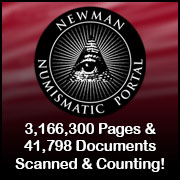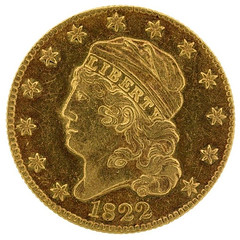
About UsThe Numismatic Bibliomania Society is a non-profit association devoted to the study and enjoyment of numismatic literature. For more information please see our web site at coinbooks.org SubscriptionsThose wishing to become new E-Sylum subscribers (or wishing to Unsubscribe) can go to the following web page link MembershipThere is a membership application available on the web site Membership Application To join, print the application and return it with your check to the address printed on the application. Print/Digital membership is $40 to addresses in the U.S., and $60 elsewhere. A digital-only membership is available for $25. For those without web access, write to: Charles Heck, Treasurer AsylumFor Asylum mailing address changes and other membership questions, contact Chuck at this email address: treasurer@coinbooks.org SubmissionsTo submit items for publication in The E-Sylum, write to the Editor at this address: whomren@gmail.com
BUY THE BOOK BEFORE THE COIN |
- WAYNE'S WORDS: THE E-SYLUM NOVEMBER 8, 2020
- NBS BIBLIOTALK PODCAST ON BOOKBINDING
- KOLBE & FANNING AUCTION SALE 158 HIGHLIGHTS
- NEW BOOK: MONEY AND POWER IN HELLENISTIC BACTRIA
- NEW BOOK: CURRENCIES OF RAJPUTANA
- WARNER CLYDE HUBBARD (1916-2020)
- ROBERT OBOJSKI (1929-2020)
- NNP ADDS NUMISMATICS OF ABOLITION MONOGRAPH
- VIDEO: PANDAAMERICA FOUNDER MARTIN WEISS
- DIGITIZING THE NATIONAL NUMISMATIC COLLECTION
- MORE ON THE BANK OF ALCATRAZ OVERSTAMP
- NOTES FROM E-SYLUM READERS: NOVEMBER 8, 2020
- THE RECTANGLE COINS: JAPANESE BAR MONEY
- JAPANESE COIN COLLECTION AT THE BRITISH MUSEUM
- VOCABULARY TERM: NONSENSE DIE
- EDGAR HOLMES ADAMS (1868-1940)
- HARVEY STACK'S NUMISMATIC FAMILY, PART 82
- HARVEY STACK ON NEW YORK'S NUMISMATIC DISTRICT
- COLTRANE NORTH CAROLINA CURRENCY
- AZERBAIJAN MUSEUM DISPLAYS ANCIENT COINS
- PAKISTAN NUMISMATIST SHAKEEL AHMAD KHAN
- ISRAEL ANTIQUITIES AUTHORITY COIN COLLECTION
- COINS FOUND AT MARYLAND PLANTATION
- ZOOMISMATICS: STACK'S BOWERS LARRY MILLER EVENT
- TRIPLE COUNTERMARKED COIN EXAMINED
- TOKEN AND MEDAL MAKER JOHN GIBBS
- HISTORY OF GERMANY’S BLUE MAX MEDAL
- THE STORY OF CANADA'S 1975 TWO-DOLLAR BILL
- LOOSE CHANGE: NOVEMBER 8, 2020
- A SURREAL ESCHERESQUE BOOKSTORE IN CHINA
- FEATURED WEB SITE: THE TYRANT COLLECTION
Click here to access the complete archive
Click here to unsubscribe (scroll down)
To comment or submit articles, reply to whomren@gmail.com
Content presented in The E-Sylum is not necessarily researched or independently fact-checked, and views expressed do not necessarily represent those of the Numismatic Bibliomania Society.
WAYNE'S WORDS: THE E-SYLUM NOVEMBER 8, 2020
 New subscribers this week include:
Larre Shiller, courtesy of Barry Tayman;
Brandon Adcock,
Shantanu Singh, and
Bryan Stoughton.
Welcome aboard! We now have 6,590 subscribers.
New subscribers this week include:
Larre Shiller, courtesy of Barry Tayman;
Brandon Adcock,
Shantanu Singh, and
Bryan Stoughton.
Welcome aboard! We now have 6,590 subscribers.
Thank you for reading The E-Sylum. If you enjoy it, please send me the email addresses of friends you think may enjoy it as well and I'll send them a subscription. Contact me at whomren@gmail.com anytime regarding your subscription, or questions, comments or suggestions about our content.
This week we open with a new NBS podcast, highlights from the upcoming Kolbe & Fanning sale, two new books, updates from the Newman Numismatic Portal, and more.
Other topics this week include authors Edgar H. Adams, Clyde Hubbard and Robert Obojski, the numismatics of abolition, digitizing the National Numismatic Collection, Japanese bar money, nonsense dies, New York's numismatic district, North Carolina currency, the Blue Max, and the Tyrant Collection.
To learn more about numismatic bookbinding, Buenos Aires medals, the King of Mexican Numismatics, PandaAmerica, Dorothy Baber, the Japanese Coin Collection at the British Museum, ANACS grading certificates, Capital Coin Company, the Israel Antiquities Authority coin collection, and Zoomismatics, read on. Have a great week, everyone!
Wayne Homren
Editor, The E-Sylum
NBS BIBLIOTALK PODCAST ON BOOKBINDING
The latest episode of the Numismatic Bibliomania Society podcast is now available for listening. Check it out! It's on the NBS web site but also available elsewhere. Vice-President/Secretary Len Augsburger provided this report. -Editor
NBS Podcast "The World of Bookbinding" Posted
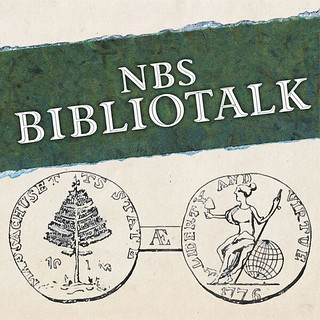 The latest episode of the NBS Bibliotalk podcast, "The World of Bookbinding" is now available on the NBS website and other popular podcasting platforms such as Buzzsprout. Lianna Spurrier, Bibliotalk producer, interviews Scott Kellar of Scott Kellar Bookbinding and Restoration in Chicago.
The latest episode of the NBS Bibliotalk podcast, "The World of Bookbinding" is now available on the NBS website and other popular podcasting platforms such as Buzzsprout. Lianna Spurrier, Bibliotalk producer, interviews Scott Kellar of Scott Kellar Bookbinding and Restoration in Chicago.
A number of NBSers in the Midwest have used Scott’s services to conserve numismatic books, and his work is well-known. Kellar discusses how he got started in the business, a typical day in his shop, and particularly interesting or challenging projects. Kellar maintains a storefront on the northwest side of Chicago, well worth a visit and easily accessible from the 2021 ANA convention site, for those planning to attend.
Link to "The World of Bookbinding" on the NBS home page:
https://www.coinbooks.org/
Link to "The World of Bookbinding" on Buzzsprout:
http://nbsbibliotalk.buzzsprout.com/

KOLBE & FANNING AUCTION SALE 158 HIGHLIGHTS
Here are some more highlights of the Kolbe & Fanning sale announced last week. -Editor
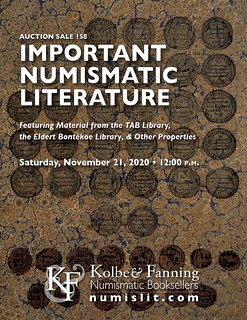 Kolbe & Fanning Numismatic Booksellers are holding our 158th auction sale on Saturday, November 21, 2020. The 467-lot sale features material from the extensive working library of Eldert Bontekoe, the TAB Library of works on ancient coins, and other properties. Most heavily focused on books and catalogues relating to ancient coins, the sale also features a substantial section on world coins and a smaller, but choice, selection of items of American interest.
Kolbe & Fanning Numismatic Booksellers are holding our 158th auction sale on Saturday, November 21, 2020. The 467-lot sale features material from the extensive working library of Eldert Bontekoe, the TAB Library of works on ancient coins, and other properties. Most heavily focused on books and catalogues relating to ancient coins, the sale also features a substantial section on world coins and a smaller, but choice, selection of items of American interest.
Some highlights of the sale include:

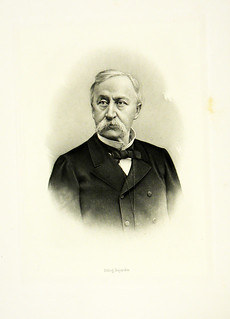
Lots 56 and 174
Lot 56: Edward Newell’s copy of Combe’s 1782 Hunterian catalogue
Lot 174: Rollin & Feuardent’s majestic 1898 catalogue of the Henri Hoffmann collection
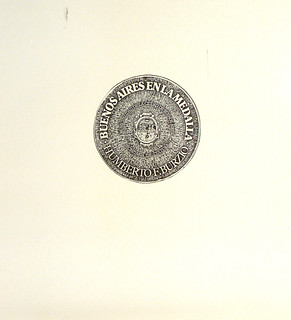
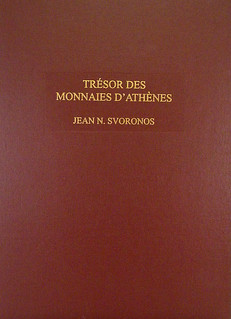
Lots 200 and 286
Lot 200: one of only 50 copies produced of the 2012 reprint of Svoronos & Pick on Athenian coins
Lot 286: Burzio’s massive three-volume work on Buenos Aires medals
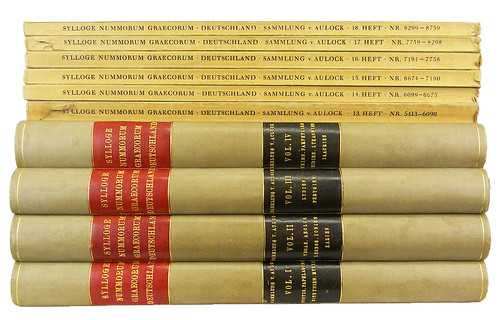
Lot 211
Lot 211: an original set of Sylloge Nummorum Graecorum von Aulock

Lot 269
Lot 269: Dr. Bassoli’s set of Argelati’s rare and enormously important De Monetis Italiae, a foundational classic of Italian numismatic literature
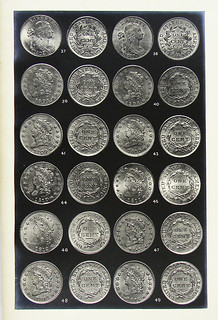
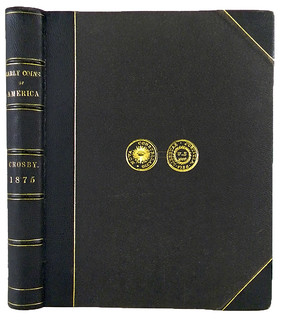
Lots 412 and 415
Lot 412: S.H. Chapman’s catalogue of the Dr. Henry Beckwith collection of United States large cents, with seven spectacular photographic plates of the highest quality
Lot 415: Brent Pogue’s exceptional copy of the "Nova Constellatio" binding of the first edition of Crosby’s Early Coins of America

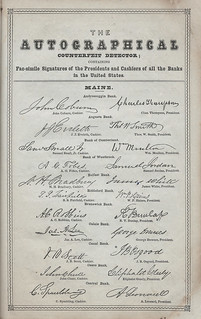
Lots 425 and 459
Lot 425: the complete photographic record of the Eugene Gardner collection of United States silver coins
Lot 459: a beautifully bound copy of Thompson’s rare Autographical Counterfeit Detector.
Register early to bid online
Bids may be placed via post, email, fax or phone, as well as online. Kolbe & Fanning is using Auction Mobility as our third-party online bidding platform. Auction Mobility is an app-based platform allowing users the ability to participate in the sale through phones, tablets and computers. To register for the sale, bidders must go to
bid.numislit.com
and sign up. Once you have set up an account, you may browse lots, place advance bids, or participate in the live sale online. Those wishing to participate on their devices can download the new Kolbe & Fanning app through the Apple or Google Play Store.
Bids placed via post, email, fax or phone must be received by Friday, Nov. 20, the day before the sale, in order for them to be processed. Advance absentee bids may also be placed at any time online at bid.numislit.com; live internet bidding will be available during the sale itself through the same platform.
Kolbe & Fanning Numismatic Booksellers LLC is a licensed and bonded auction firm in the State of Ohio. For more information, please see the Kolbe & Fanning website at bid.numislit.com or email David Fanning at df@numislit.com.
To read the earlier E-Sylum article, see:
KOLBE & FANNING AUCTION SALE 158 ANNOUNCED
(https://www.coinbooks.org/v23/esylum_v23n44a02.html)

NEW BOOK: MONEY AND POWER IN HELLENISTIC BACTRIA
The American Numismatic Society has published a new book on the coinage of Hellenistic Bactria. Here's the announcement. -Editor
Money and Power in Hellenistic Bactria
(Numismatic Studies 40)
By Simon Glenn
$150
?member price: $105
 The coins produced by the kings of the Graeco-Bactrian kingdom of the third and second centuries BC are the best and, in some cases only, primary source of evidence for the history of the period. The lack of context has, however, often led to highly speculative uses of the numismatic evidence in previous historical reconstructions. Money and Power in Hellenistic Bactria returns the focus to the coins themselves and presents the results of a full die study of the issues of Euthydemus I, Demetrius I, Euthydemus II, Pantaleon, Agathocles, and Antimachus I. In doing so it proposes a new, soundly based history of the Graeco-Bactrian kingdom under these kings based on a thorough understanding and suggested reconstruction of these enigmatic coins.
The coins produced by the kings of the Graeco-Bactrian kingdom of the third and second centuries BC are the best and, in some cases only, primary source of evidence for the history of the period. The lack of context has, however, often led to highly speculative uses of the numismatic evidence in previous historical reconstructions. Money and Power in Hellenistic Bactria returns the focus to the coins themselves and presents the results of a full die study of the issues of Euthydemus I, Demetrius I, Euthydemus II, Pantaleon, Agathocles, and Antimachus I. In doing so it proposes a new, soundly based history of the Graeco-Bactrian kingdom under these kings based on a thorough understanding and suggested reconstruction of these enigmatic coins.
ABOUT THE AUTHOR
Simon Glenn is Digital Curator of Early Modern European in the Heberden Coin Room at the Ashmolean Museum of Art and Archaeology, University of Oxford. He was previously a research fellow of the same institution where he has worked on both Greek and Roman numismatics. He has been a member of the Coin Hoards of the Roman Empire, Roman Provincial Coinage, Ancient Coins as Related Cultural Heritage, and the Oxford-Paris Alexander projects. He is a graduate of the University of Edinburgh and completed his PhD at the University of Oxford (Wolfson College), the research of which provides the basis for this book. He is a fellow and council member of the Royal Numismatic Society, and is a member of the American Numismatic Society.
Forgot the ANS Member discount code? Email membership@numismatics.org, or call (212) 571.4470, ext. 117.
For more infomation, or to order (in the United States), see:
Money and Power in Hellenistic Bactria: Euthydemus I to Antimachus I [Hardback]
(https://www.oxbowbooks.com/dbbc/money-and-power-in-hellenistic-bactria.html)
For more information, or to order (in the rest of the world), see:
Money and Power in Hellenistic Bactria [Hardback]
(https://www.oxbowbooks.com/oxbow/money-and-power-in-hellenistic-bactria.html)

NEW BOOK: CURRENCIES OF RAJPUTANA
A new book has been published on the currencies of the Hindu states of Rajputana. -Editor
The Currencies of Rajputana
William Wilfrid Webb (Author)
Synopsis
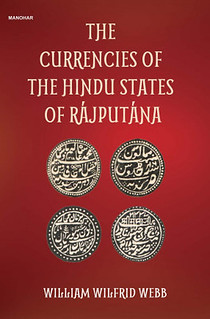 The author, who was posted as Surgeon Captain in the Indian Medical Service, Bengal Army, in his leisure hours during the years spent on duty at the courts of Udaipur and Bikaner, devoted his attention to the subject of coinage in the native states of Rajputana. The amount of local coins circulating in the Rajput states was very large, almost the collection of a century.
The author, who was posted as Surgeon Captain in the Indian Medical Service, Bengal Army, in his leisure hours during the years spent on duty at the courts of Udaipur and Bikaner, devoted his attention to the subject of coinage in the native states of Rajputana. The amount of local coins circulating in the Rajput states was very large, almost the collection of a century.
The coins were fashioned in a crude way with a hammer and anvil and had plain unmilled edges. Stamping was carried out in a similarly rough manner – one workman holding the piece of metal between two dyes, while another workman with a blow from a heavy hammer completed the coin.
Gold, silver and copper coins were minted. Some of these mints were later closed down due to an order of the British Indian government in 1870. However some rupee coins were given permission to continue. The book covers the history of the coins of Mewar, Dungarpur, Marwar, Jhalawar, Alwar, Bharatpur, etc.
For more information, or to order, see:
The Currencies of the Hindu States of Rajputana
(https://www.bagchee.com/books/BB131109/the-currencies-of-the-hindu-states-of-rajputana)

WARNER CLYDE HUBBARD (1916-2020)
Numismatics has lost another of the great numismatists of all time: Clyde Hubbard passed October 26th at the age of 104. Thanks to Adrián González-Salinas for letting us know, and for the book images below. -Editor
The Sociedad Numismática de México writes:
"The Numismatic Society of Mexico mourns the sensitive passing of 104-year-old Clyde Hubbard (Philadelphia, 1916) who was a founding partner of SONUMEX in 1952, with partner number A-22, occupied different Society positions, numismatic researcher, co-authored in various works including: "Hookneck, the profile eagle" and "A Guide book of Mexican coins 1822 to date"
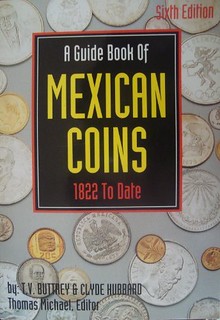
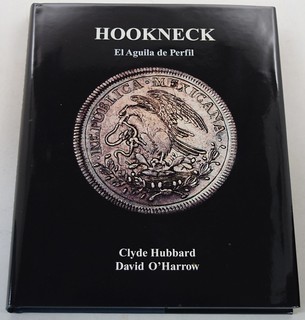
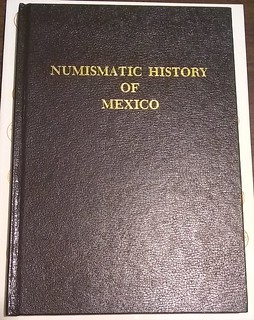
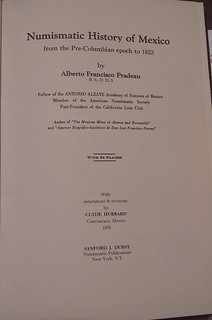
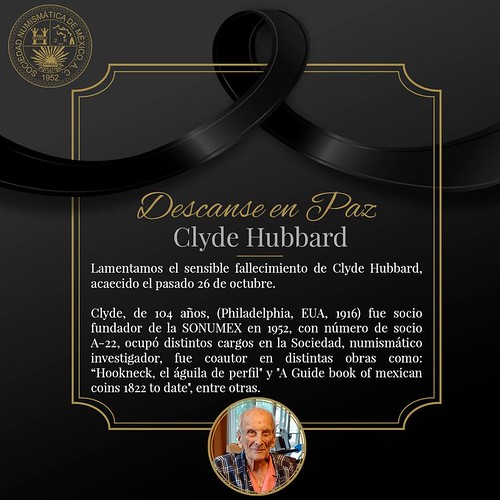
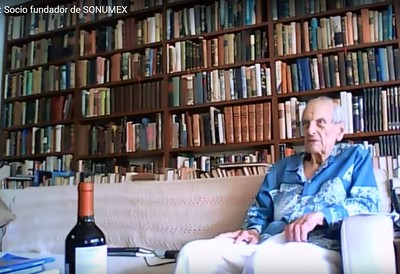
Clyde Hubbard with his library
Ken Bressett writes:
"Clyde was my dear friend and inspiration for over 50 years. He was always a charming host and entertainer at his home in Cuernavaca whenever I visited him there. He will be missed by all for his vast knowledge, cheerful attitude and good humor."
Anthony Tumonis of Tucson, Arizona writes:
"Clyde Hubbard was a pioneer and scholar in Mexico Coinage who will be missed by everyone he came in contact with. Kind and generous, Clyde showed compassion and made you feel like you were family. I always looked forward to visiting with Clyde at numerous coin shows though out the years. Clyde made me a better Numismatist with his friendship."
Adrián González-Salinas writes:
"Don Clyde Hubbard will be missed by all of Mexico's numismatists. QEPD Mr. Clyde Hubbard."
Translations:
(1) Don = Mister
(2) QEPD = Que En Paz Descanse = RIP = Requiescat In Pace (Rest in Peace).
-Editor
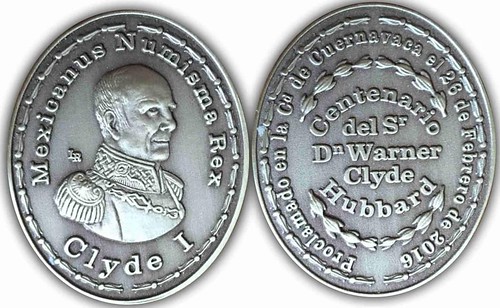
Mexicanus Numisma Rex: King of Mexican Numismatics!
To watch a video interview, see:
Clyde Hubbard: Socio fundador de SONUMEX
(https://www.youtube.com/watch?v=MG7uxiOfV1A)
To read the Facebook announcement, see:
Sociedad Numismática de México
(https://www.facebook.com/sonumexoficial/posts/3459057664180576)
To read the earlier E-Sylum articles, see:
VIDEO: CLYDE HUBBARD AND FRIENDS
(https://www.coinbooks.org/v22/esylum_v22n15a11.html)
WARNER CLYDE HUBBARD
(https://www.coinbooks.org/v22/esylum_v22n14a07.html)
VIVA CLYDE HUBBARD!
(https://www.coinbooks.org/v22/esylum_v22n15a14.html)

ROBERT OBOJSKI (1929-2020)
Pete Smith passed along the obituary of numismatic author Robert Obojski. Thanks. I found more information on Wikipedia and elsewhere and pieced together this article. Would any of our readers have something to add to this? -Editor
Robert Obojski age 91, born Oct 19, 1929, passed away Oct 31, 2020 in Roslyn, NY.
Robert Obojski received a Ph.D. from Western Reserve University in 1955, became a college professor of English and went on to write numerous books on baseball, stamp and coin collecting, and memorabilia. Among other things, he was known for his amazing recall of statistics, particularly on baseball.
To read the complete article, see:
Robert Obojski
(https://obits.cleveland.com/obituaries/cleveland/obituary.aspx?pid=197035179)
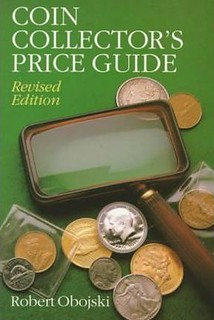
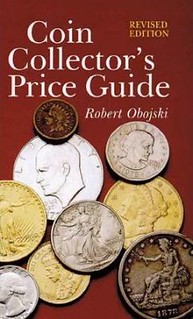
Obojski taught at Detroit Institute of Technology (1955–60), Western Kentucky State College (1962–64), Alliance College -Cambridge Springs, PA (1964–66, 1967–69), Edinboro University (1966–67), and Delaware State College (1970–72) Full Professor.
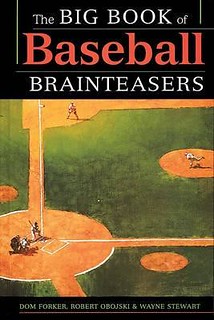 Obojski worked as contributing editor for Sports Collectors Digest, Global Stamp News, and Linn's Weekly Stamp News.
Obojski worked as contributing editor for Sports Collectors Digest, Global Stamp News, and Linn's Weekly Stamp News.
He was an ongoing contributor to Teddy Bear Review as well as publications from Sterling Publishing. He had lived in Port Washington, NY.
His books include Bush League: a History of Minor League Baseball (1975), Great Moments of the Playoffs & World Series (1988), and The Rise of Japanese Baseball Power (1975).
Here are some of the coin books written, co-written or edited by Robert Obojski. -Editor
- Catalogue of the World's Most Popular Coins by Fred Reinfeld and Burton H. Hobson, edited by Robert Obojski (1986)
- Coin Collecting as a Hobby written by Burton H. Hobson edited by Robert Obojski (1986)
- Coin Collector's Price Guide (1995)
- Illustrated Encyclopedia of World Coins written with Burton Hobson (1983)
- Ships & Explorers on Coins (1970)
To read the complete article, see:
Robert Obojski
(https://en.wikipedia.org/wiki/Robert_Obojski)

NNP ADDS NUMISMATICS OF ABOLITION MONOGRAPH
The latest addition to the Newman Numismatic Portal is a new monograph on the numismatics of abolition. Project Coordinator Len Augsburger provided the following report. Thanks. -Editor
Ernie Nagy Publishes Numismatic Collateral of British and American Abolition
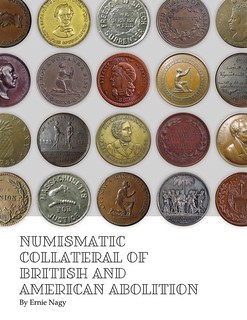 Black history is drawing increased attention in our society, with the formation of related academic programs and focal points such as the recently opened National Museum of African American History and Culture in Washington, D.C. Numismatics forms another lens through which to view Black history, with notable contributions such as John Kraljevich’s Black History Month blog, initially published in 2017.
Black history is drawing increased attention in our society, with the formation of related academic programs and focal points such as the recently opened National Museum of African American History and Culture in Washington, D.C. Numismatics forms another lens through which to view Black history, with notable contributions such as John Kraljevich’s Black History Month blog, initially published in 2017.
Ernie Nagy’s monograph Numismatic Collateral of British and American Abolition is the latest contribution to the field. This work serves as a catalog of American and British coins, tokens, and medals related to the 18th and 19th century abolition movement. Britain was well ahead of the U.S. in this regard, as these artifacts well demonstrate. Graphics and layout for this work were provided by Lianna Spurrier under sponsorship of Newman Numismatic Portal.
It's an excellent work, well worth taking some time to read. I learned a number of things from it, and will look forward to further research on the topic. -Editor
Link to Numismatic Collateral of British and American Abolition on Newman Portal:
https://nnp.wustl.edu/library/booksbyauthor/539733
Link to John Kraljevich’s Black History Month blog:
http://omeka.wustl.edu/omeka/exhibits/show/nnp-selections/blackhistorymonth2017
To read earlier E-Sylum articles, see:
2018 WORLD'S FAIR OF MONEY EXHIBITS
(https://www.coinbooks.org/v21/esylum_v21n34a24.html)
NOTES FROM E-SYLUM READERS: SEPTEMBER 2, 2018 :
More 2018 World's Fair of Money Exhbits
(https://www.coinbooks.org/v21/esylum_v21n35a09.html)
VIDEO: PANDAAMERICA FOUNDER MARTIN WEISS
These are selections from the David Lisot Video Library that feature news and personalities from the world of coin collecting. David has been attending coin conventions since 1972 and began videotaping in 1985. The Newman Numismatic Portal now lists all David’s videos on their website at:
https://nnp.wustl.edu/library/multimediadetail/522852
Here's one on PandaAmerica founder Martin Weiss. -Editor
Numismatic Personality: Martin Weiss Interview, Long Beach Expo, September 19, 2008.
 Marty Weiss was one of the most innovative and creative marketers in the coin industry. He started out as a coin collecting pharmacist and branched into international coin distribution for the mints of China, Macao, Australia, Singapore and more. He was a true Renaissance man with other interests that included photography and music. Marty was one of the first sponsors of the Coin Report on the Financial News Network with David Lisot in 1987. He and David became good friends and business associates. David called Marty "Napoleon Weiss" because of his dominance in world coin marketing.
Marty Weiss was one of the most innovative and creative marketers in the coin industry. He started out as a coin collecting pharmacist and branched into international coin distribution for the mints of China, Macao, Australia, Singapore and more. He was a true Renaissance man with other interests that included photography and music. Marty was one of the first sponsors of the Coin Report on the Financial News Network with David Lisot in 1987. He and David became good friends and business associates. David called Marty "Napoleon Weiss" because of his dominance in world coin marketing.
In this video taken at the Long Beach Expo on September 19, 2008, David interviews his longtime friend about the current gold market, how he started out as a pharmacist collecting coins, how he started distributing modern coins that evolved into PandaAmerica. Marty tells the story of how in 1984 the director of the Shanghai Mint came to the ANA Convention in San Diego which resulted in the creation of the first 12 ounce gold Panda. Marty relates how he was in the Hong Kong Airport when he conceived the "Inventions of China" as a coin series. He talks about when he started a television network and what came from it and much more. Martin "Marty" Weiss passed away on November 1, 2020. His marketing brilliance and positive attitude will be missed.
Martin David Weiss
April 3, 1939 – November 1, 2020
An excerpt of the video is available for viewing on the Coin Television YouTube Channel at:
https://youtu.be/PrwApJKtdLU
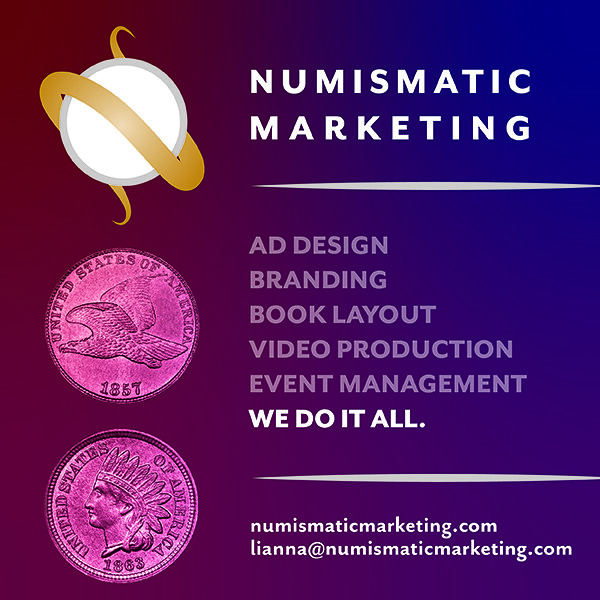
DIGITIZING THE NATIONAL NUMISMATIC COLLECTION
Dr. Ellen Feingold is the Curator of the National Numismatic Collection at the National Museum of American History. She submitted this summary of NNC's digitization progress to date. Thank you! Excellent endeavor. -Editor

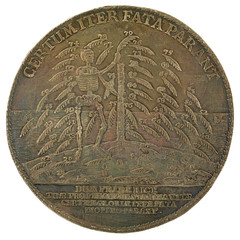
Many of you are familiar with the Smithsonian’s National Numismatic Collection (NNC), but have had limited access to the treasures it holds. Since 2015, the staff of the NNC have been working diligently to share this rich and diverse collection online in order to make it a public resource for research and education.
We are proud to announce that over the past six years we have added over 320,000 new numismatic records and images to the National Museum of American History’s online database. The new records include the famous collections of Josiah K. Lilly Jr., Grand Duke George Mikhailovich, Paul A. Straub, and many others accessible via the links below:
- 6,128 coins from the Josiah K. Lilly Jr. Collection
- 5,754coins from the Paul A. Straub Collection
- 13,678coins and medals from the Grand Duke George Mikhailovich Collection
- 8,000 East Asian coins
- 5,800Chinese banknotes
- 880West African currency objects
- 274,340proof sheets from the Bureau of Engraving and Printing
- 6,000pieces of German notgeld
- 119Comitia Americana medals
The NNC is now in the process of digitizing the South African currency collection, which will be available online in 2021. We intend to continue our digitization efforts until we have digitized the entirety of the NNC.
The NNC would like to thank the Friends of the National Numismatic Collection, Jeff Garrett, Michael Chou, the Howard F. Bowker family, John Adams, Andrew Shiva, the London School of Economics, and the Smithsonian Institution for their generous support of the projects above. If you wish to support these efforts to invest in the collection’s future and cultivate the next generation of numismatists please consider joining the Friends of the Nationl Numismatic Collection.
To watch a video of the mass digitization process, see:
Smithsonian Mass Digitization: National Museum of American History, National Numismatic Collection
(https://www.youtube.com/watch?v=RV-QaSmGUjc&feature=youtu.be)
For more information on the collection (and links to images), see:
The Collection : Recent digitization initiatives
(https://americanhistory.si.edu/national-numismatic-collection/collection)
For more on the Friends of the National Numismatic
Collection, see:
https://americanhistory.si.edu/giving/friends-of-numismatics
 To read earlier E-Sylum articles, see:
To read earlier E-Sylum articles, see:
SMITHSONIAN DIGITIZES 270,000 BEP CERTIFIED PROOFS
(https://www.coinbooks.org/esylum_v18n48a05.html)
SMITHSONIAN'S RAPID CAPTURE DIGITIZATION
(https://www.coinbooks.org/v20/esylum_v20n07a05.html)

MORE ON THE BANK OF ALCATRAZ OVERSTAMP
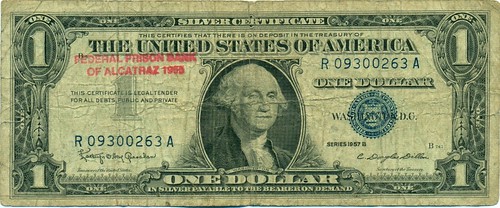
Regarding the "Federal Prison Bank of Alcatraz 1955" overstamp discussed last week, Jim Downey writes:
"The Alcatraz stamp is a fantasy. It purports to be from 1955 but is shown on a Series 1957B Silver Certificate.
"The 1957B Silver Certificates were delivered to the Treasury from the BEP between January and November 1963. Alcatraz ceased operating as a prison in March 1963."
"I remember seeing these on eBay and challenged the seller. I received a less than professional response. It was an easy thing to disprove."
Dave Lange writes:
"My attention was caught by the silver certificate overstamped with FEDERAL PRISON BANK OF ALCATRAZ 1955. When I see things like this they very quickly go into my "too cool to be true" file, along with bawdy house tokens, CSA dog tags and the like.
"While I haven't studied the subject of prisoner currency, and I can't say for certain that this overstamp is fake, there are a few things that arouse suspicion. First is the series date of the note. Granahan and Dillon served concurrently only from January 3, 1963 to March 31, 1965, so notes with these signature could not have been issued prior to the earlier date. The Alcatraz Federal Penitentiary closed March 21, 1963, so that offers an extremely narrow window of time in which a legitimate overprint could have been produced. If such an action had been taken during that two-month window, why would the stamp be dated 1955? Why would a note be stamped that way at all, unless it was to prevent prisoners from trading with outsiders? Were these notes limited to use by guards and other staff, and if so what could they possibly be buying at Alcatraz? It's almost certain that the guards were paid by check and that they would have to cash or deposit these checks on the mainland. It also seems unlikely that actual USA coins and notes would be in use; some sort of scrip or tokens would be much more likely.
"Finally, it seems that every person who ever had even the slightest connection with Alcatraz during its period as a federal prison has written a book about their experiences. I own or have read nearly all of these books and have taken the prison tour many times, and I've never seen any reference to actual money of any sort being used on the island."
Thanks for the observations. I've passed these along to the authors of the Prison money book for consideration in future editions. -Editor
Co-author Bob Hewey writes:
"Thanks. I guess we'll have to delete it from the second edition."
To read the earlier E-Sylum articles, see:
NEW BOOK: PRISON TOKENS OF THE U.S. AND CANADA
(https://www.coinbooks.org/v23/esylum_v23n44a03.html)
FEDERAL PRISON BANK OF ALCATRAZ OVERSTAMP
(https://www.coinbooks.org/v23/esylum_v23n44a27.html)
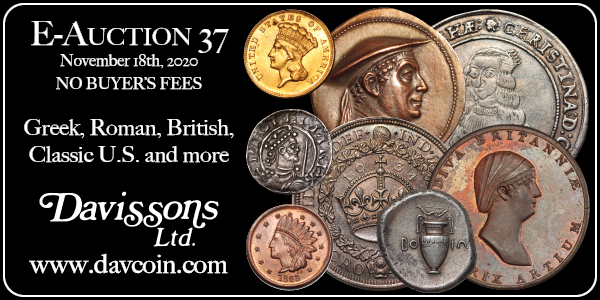
NOTES FROM E-SYLUM READERS: NOVEMBER 8, 2020
On the Stone Mountain Distinguished Service Medal
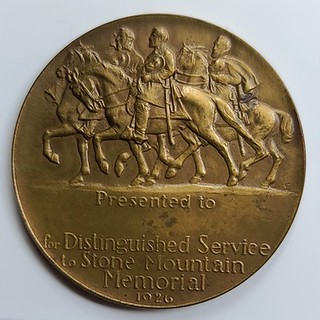 Regarding Ty Gardner's questions on the 1926 Stone Mountain Distinguished Service Medal,
Dick Johnson writes:
Regarding Ty Gardner's questions on the 1926 Stone Mountain Distinguished Service Medal,
Dick Johnson writes:
"Here is all we know: Catalog cards show these medals were issued in both bronze and gold. Quantities are unknown. MACO records no longer exist."
Thanks. Anyone with further information on these, please contact Ty Gardner at tygardner2006@yahoo.com . -Editor
To read the earlier E-Sylum article, see:
STONE MOUNTAIN DISTINGUISHED SERVICE MEDAL
(https://www.coinbooks.org/v23/esylum_v23n43a14.html)
More on Frances Marshall
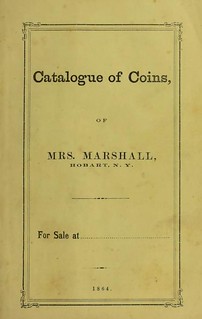 Dave Hirt writes:
Dave Hirt writes:
"The John Lupia biography of Mrs. Frances Marshall was quite a pleasant surprise to me. Thank you John!! I and others like myself that are interested in the early period of numismatics in America learned a lot of facts about Mrs. Marshall that we did not know before. She was a real trail-blazer of women in numismatics, being the first woman that I know of mentioned in the same breath with coin collecting. Thank you again John."
To read the earlier E-Sylum articles, see:
THE MYSTERIOUS MRS. MARSHALL
(https://www.coinbooks.org/esylum_v19n23a11.html)
FRANCES MARIA KEELER MARSHALL (1810-1879)
(https://www.coinbooks.org/v23/esylum_v23n44a13.html)
Dorothy Baber Votes
Pete Smith writes:
"Dorothy Baber voted in the 2020 election. Nothing remarkable about that, right? Well, when she was born on May 10, 1920, the 19th Amendment to the Constitution had not yet passed and women did not have the right to vote. That amendment was not passed until August 18, 1920. Thus, her life spans the entire century that women have enjoyed that right to vote.
Dorothy’s accomplishments in numismatics are many. She served as President of the California State Numismatic Association, the California Exonumist Society, the Token and Medal Society and the Heartland Coin Club. Among the many honors she received, she was awarded the Farran Zerbe Memorial Award from the ANA in 1995 when she was only 75."
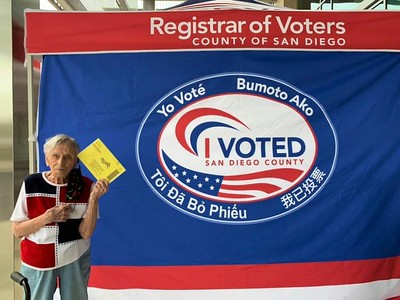
Wow! Numismatists are a hardy bunch. Hooray for Dorothy! -Editor
David Kahn on the Fall 2020 PAN Show
I reached out to dealer (and E-Sylum supporter) David Kahn for observations on the recent Pennsylvania Association of Numismatists fall show. -Editor
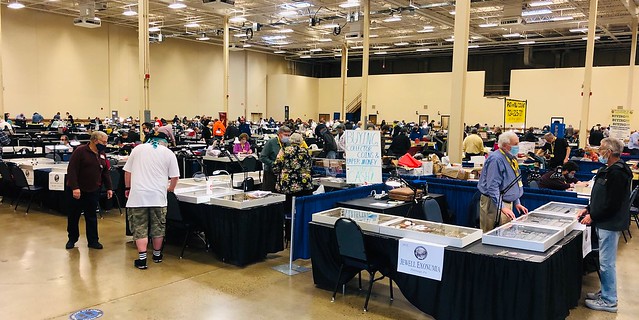
Dave writes:
"I did attend PAN, though only as a buyer and for a very short while. We don't typically take a table at that show. I arrived a little before 3pm on Wednesday to a very different layout than for a typical PAN show, which has been held in the smaller, carpeted room to the right of the loading dock entrance. This time, the show was held in the larger, more convention hall-like room, located straight ahead. There was paperwork to fill out (for contract-tracing, should that need arise) specific health questions to answer, and temperature to be checked. All of that extra went without a hitch, and I wrote PAN a check for my "early-bird" admission, and off on the hunt I went.
The aisles were very wide, and everyone I saw followed the mask and spacing requirements. I felt comfortable that proper precautions were in place and being taken seriously by those in attendance. Though the dealer group setting up was a little thin, it is always that way on a Wednesday afternoon set-up. Quite a few of the dealers try to keep their expenses in check by cutting out a night on the road, thus they arrive Thursday morning. But, there were more than enough dealers there to keep me busy. For my purposes - to buy great coins that appeal to me and I think will appeal to my customers - the show was a ringing success, even though my visit was only 4 hours long. There were more coins to be found, in another state, at another show! I was off to the South Carolina Numismatic Association's show in Greenville."
Thanks. It's a rocky time for coin shows and it will be a while yet before the major ones return. But small and midsized shows are making a comeback due to hard work, planning, cooperation and patience. Hang in there, everyone! -Editor
To read the earlier E-Sylum article, see:
PAN FALL 2020 SHOW SUCCEEDS DESPITE PANDEMIC
(https://www.coinbooks.org/v23/esylum_v23n44a17.html)
Coin World Corrals Coins
Tom DeLorey writes:
"Apropos the 1974 cent shortage, back in the Spring of that year Margo Russell at Coin World had heeded Mary Brooks' call for people to turn in their cents by browbeating everybody at Amos Press to bring in their dresser drawer cent hoards and dump them into a large jar in the Coin World office. After somewhere between $50 and $100 worth had been accumulated, the two youngest staff members, Dawn Billings and myself, were drafted to schlep this boodle across Sidney's Courthouse Square to the Citizens Baughman National Bank. There, as a staff photographer recorded the event for posterity, we deposited the cents into what I assume was Margo's account. I also assume that she eventually got the participation certificate."
To read the earlier E-Sylum article, see:
NOTES FROM E-SYLUM READERS: OCTOBER 25, 2020 : 1970s Penny Shortage Treasury
(https://www.coinbooks.org/v23/esylum_v23n43a12.html)
Newcomer's Gold
Regarding the fabled collection of Waldo Newcomer,
Saul Teichman writes:
"Newcomer had an Ultra high relief and had a complete set of the gold stellas. They appear in his pattern inventory."
To read the earlier E-Sylum article, see:
THE LEGENDARY COLLECTION OF WALDO NEWCOMER
(https://www.coinbooks.org/v23/esylum_v23n44a14.html)

THE RECTANGLE COINS: JAPANESE BAR MONEY
Lianna Spurrier launched a website this week that publicizes some of her research on Japanese bar money. -Editor
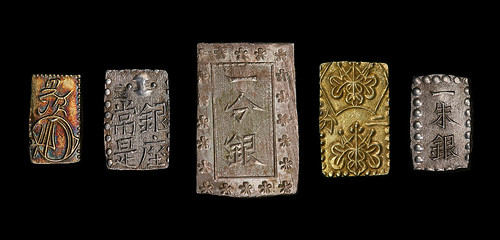
Lianna writes:
"Japanese bar money is a series of rectangular coins issued from 1599-1869. Some of the most common types are found fairly easily in the US, but they’re presented as novelties with little background information. I became intrigued by one of these novelties at the end of 2018 and quickly discovered just how difficult they were to research. I quickly dove into the rabbit hole, tracking down Japanese sources when the English references didn’t answer all of my questions. I eventually plan to write a book on the series, but seeing as that’s still quite a ways off, I’ve put together a website with some of my research in progress in hopes of making the series a bit more accessible to English-speaking collectors. It will be updated as my research progresses, and I’ve partnered with a dealer in Hong Kong to set up a shop on the site in the coming weeks to offer solely bar money. Enjoy!"
I owned one of the small silver pieces back in my world coin collecting days. I was fascinated by it as well, but information was even harder to come by then. Here's a short excerpt from Lianna's earlier CoinWeek article - see the complete article online for more. -Editor
Japan started minting its own coins around 700 CE, heavily based on Chinese coinage. These first coins were primarily round and made of copper, with a square hole in the center and four characters on the obverse. To the untrained eye, they are almost identical to Chinese cash coins.
Japan introduced a trimetallic system in 1569, but precious metals weren’t coined originally. Instead, gold and silver dust were measured, then sealed into bags that were traded. This was clearly inconvenient, and both metals were ultimately coined into a variety of shapes.
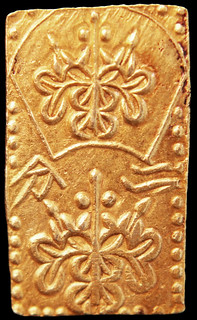 Commerce became based on the Ryo, a base unit known, when coined in gold, as a Koban. Both silver and gold were coined into Bu and Shu denominations; one Bu was 1/4 Ryo, and one Shu was 1/16 Ryo.
Commerce became based on the Ryo, a base unit known, when coined in gold, as a Koban. Both silver and gold were coined into Bu and Shu denominations; one Bu was 1/4 Ryo, and one Shu was 1/16 Ryo.
However, the precious metals market in Japan was different than in the rest of the world. They completely closed themselves off from the world from roughly 1639 until 1853, when Commodore Matthew Perry from the United States landed on Japanese shores.
By the 1800s, most Bu and Shu coins were rectangular with sharp corners. These are Japanese bar money.
To visit the Rectangle Coins website, see:
The Rectangle Coins: Japanese Bar Money
(https://rectanglecoins.com/)
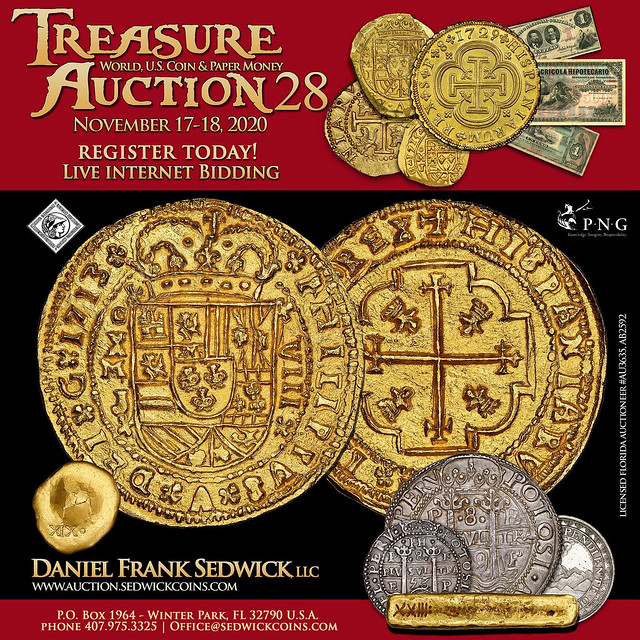
JAPANESE COIN COLLECTION AT THE BRITISH MUSEUM
Coincidentally, this week I came across a Catalogue of the Japanese Coin Collection (pre-Meiji) at the British Museum. Here's an excerpt from Helen Wang's Introduction. -Editor
The initial collections of the British Museum, founded in 1753, were acquired under the provisions of Sir Hans Sloane’s will, and included over 20,000 coins and medals from all over the world. As inscribed objects, the coins and medals were regarded as ‘metal manuscripts’ and were housed within the Department of Manuscripts. In 1807, they were moved to the Department of Antiquities. In 1860, a separate Department of Coins and Medals was created, where the coins and medals have been ever since. The entire collection of coins and medals was removed for safekeeping during the second world war, but the Department was badly damaged and its gallery, offices and much archival material were destroyed.
Although there were probably a few East Asian coins in the founding collections of the British Museum in 1753, very little attention was paid to them at first. Indeed, the earliest mention of ‘Chinese coins’ (probably a catch-all term for any cast coins with a square hole in the middle and a Chinese-looking inscription) is associated with the employment in January 1836 of Samuel Birch (1813–85). Birch had studied Chinese at school with the hope of joining the diplomatic service, but when this did not materialise he joined the British Museum, where one of his first tasks was to work on the ‘Chinese coins’. East Asian coins were not well understood in Europe at that time, and Birch soon turned his attention to Egyptology, a field in which he became a very distinguished figure.
The development of British Museum’s collection of East Asian coins would take far longer. The history of the Japanese coin collection at the British Museum is part of the history of the East Asian coin collection. Unfortunately, this series is couched in imprecise terminology such as ‘Chinese coins’ (see above), and ‘Oriental coins’ used generally and inconsistently to refer to coins from almost anywhere east of Europe. For example, in a summary document of December 1870 entitled ‘The Department of Coins and Medals. II. Acquisitions’, it is recorded that 3,695 ‘Oriental coins’ were acquired that year, including ‘Twelve copper Chinese coins’ donated by Ernest Satow.
These were, in fact, Japanese coins. At the time, no one at the British Museum had a detailed knowledge of East Asian coins, and in 1880 Terriende Lacouperie was employed on a temporary basis to put the collection of ‘Chinese coins’ in order and record the new acquisitions (there was a backlog from 1865) in a newly created separate register for East Asian coins. The following account of the history of the Japanese coin collection is based on the archival records, and for the reasons given above, is a little inconsistent in places. The most important archival records are transcribed at the end of this chapter.
Today, the Japanese coin collection at the British Museum consists of over 1,500 Japanese coins, from the earliest issues to contemporary coins. This is the first catalogue of the Japanese coin collection at the British Museum to have been produced.
To read the complete article, see:
A History of the Japanese Coin Collection at the British Museum
(https://www.academia.edu/1064185/A_History_of_the_
Japanese_Coin_Collection_at_the_British_Museum)

VOCABULARY TERM: NONSENSE DIE
Dick Johnson submitted this entry from his Encyclopedia of Coin and Medal Terminology. Thanks. I added images from earlier articles. -Editor
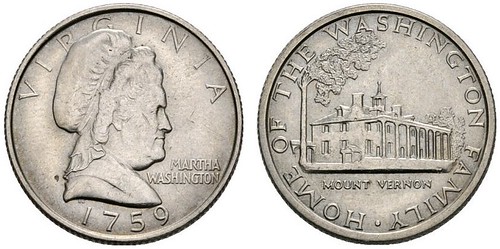
Nonsense Die.
 A die, with design purposely of no particular meaning, used to test production equipment where the use of any other die would not be feasible. Nonsense dies used at the Philadelphia Mint bear a girl’s portrait and lettering from the center of the alphabet. They are employed, for example, during set-up of a new press run, eliminating the possibility of ruining production run dies, or of creating mint errors of regular coins. Nonsense dies are occasionally used to make test coins. A similar instance is the Martha Washington Test Coin created at the Philadelphia in 1965 by mint engraver Edward R. Grove. It was used in similar cases.
A die, with design purposely of no particular meaning, used to test production equipment where the use of any other die would not be feasible. Nonsense dies used at the Philadelphia Mint bear a girl’s portrait and lettering from the center of the alphabet. They are employed, for example, during set-up of a new press run, eliminating the possibility of ruining production run dies, or of creating mint errors of regular coins. Nonsense dies are occasionally used to make test coins. A similar instance is the Martha Washington Test Coin created at the Philadelphia in 1965 by mint engraver Edward R. Grove. It was used in similar cases.
To read the earlier E-Sylum article, see:
U.S. MINT 2012 ALTERNATIVE METALS STUDY
(https://www.coinbooks.org/esylum_v15n53a12.html)
MARTHA WASHINGTON PATTERNS OFFERED
(https://www.coinbooks.org/esylum_v17n20a23.html)
Looking for the meaning of a numismatic word, or the description of a term? Try the Newman Numismatic Portal's Numismatic Dictionary at: https://nnp.wustl.edu/library/dictionary
Or if you would like a printed copy of the complete Encyclopedia, it is available. There are 1,854 terms, on 678 pages, in The Encyclopedia of Coin and Medal Technology. Even running two a week would require more than 19 years to publish them all. If you would like an advance draft of this vital reference work it may be obtained from the author for your check of $50 sent postpaid. Dick Johnson, 139 Thompson Drive, Torrington, CT 06790.
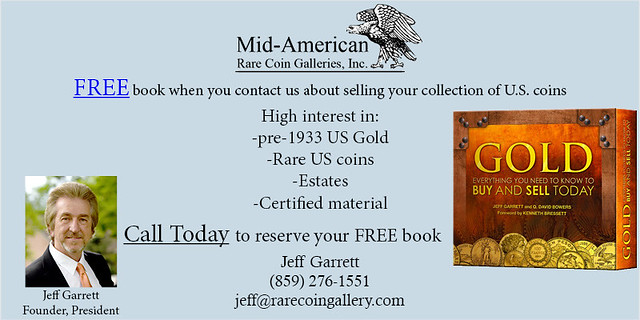
EDGAR HOLMES ADAMS (1868-1940)
John Lupia submitted the following information from the online draft of his book of numismatic biographies for this week's installment of his series. Thanks! As always, this is an excerpt with the full article and bibliography available online. This week's subject is author Edgar H. Adams. -Editor
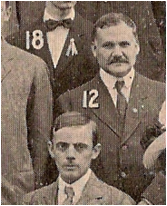 He was born in 1868, in Pennsylvania. His father’s family came from Baltimore, Maryland and his mother from what is now called West Virginia. In 1880, at the age of twelve he was accidentally shot in the leg tripping over a loaded shotgun dropped by a companion that severely wounded him handicapping him for life with a walking disability requiring him to use a cane. The 1880 U. S. Census lists him living in Saint Clairsville, Ohio, with his widowed grandmother Elizabeth Adams, his younger sister Elizabeth and three spinster aunts, one of whom, Amelia was a school teacher. The lack of parents from this Census report contributes to the perplexity and confusion of the circumstances at the time compounded by the shooting of young Adams.
He was born in 1868, in Pennsylvania. His father’s family came from Baltimore, Maryland and his mother from what is now called West Virginia. In 1880, at the age of twelve he was accidentally shot in the leg tripping over a loaded shotgun dropped by a companion that severely wounded him handicapping him for life with a walking disability requiring him to use a cane. The 1880 U. S. Census lists him living in Saint Clairsville, Ohio, with his widowed grandmother Elizabeth Adams, his younger sister Elizabeth and three spinster aunts, one of whom, Amelia was a school teacher. The lack of parents from this Census report contributes to the perplexity and confusion of the circumstances at the time compounded by the shooting of young Adams.
Due to his disability he was home-schooled by his aunt and purportedly by his father. Confined to a quasi sedentary life early on young Adams saw the first appearance of the new design of George T. Morgan for the Silver Dollar in 1878, those of John A. Kasson for the Stella $4 gold pieces in 1879, Charles E. Barber’s design of a nickel-five cent piece in 1883, the cessation of minting the nickel three-cent piece and $1 gold pieces in 1889, and the first appearance of three other Barber designs for the dime, quarter and half dollar in 1892. His later interest was highly focused on pattern and trial pieces coined at the U. S. Mint, undoubtedly inspired by his personal experiences with these changes in coinages during his adolescent and early adult years.
In any event, to compensate for the loss of his lower extremities he took up swimming allowing him to exercise all of his limbs and body. In 1895 he married Sarah E. Kelly, affectionally called Sadie, a first generation Scotch-Irish–American from New York. They had no children. She encouraged his swimming and as a member of the Bath Beach Swimming Club won his first quarter-mile championship at Coney Island on July 31, 1902. He became so proficient a swimmer that as a member of the Human Fish Club and New York Athletic Club he won the Metropolitan Amateur Athletic Union championship for plunging for distances from the years 1902 to 1905 with his record of 66 feet 9 inches, in March of 1905. He swam in the 1904 Summer Olympics at St. Louis, Missouri, taking the silver medal in the plunge and 4th place in the 220 and 880-yard freestyle and relay races.
Though handicapped, he enjoyed a very active and full life and moved his residency and business at least eleven times from 1900 until his death in 1940.
Evidently, after the 1904 Summer Olympic games Adams intended to plunge into numismatics full-time as a professional career with all of the force and determination of an Olympian. He entered the field of numismatics as a champion and incessantly was a champion at his numismatic work. In 1905, he began writing a regular column for hobbies focusing on coin and stamp collecting for the Sunday edition of a New York newspaper, The Sun, as the editor. He was paid $12 per article and some weeks published at least two or more articles.
Judging by the depth of his knowledge he must have been involved in numismatics for some years prior to his journalistic debut and had adequate credentials to get the job. Nevertheless, later that year he joined the ANA in December 1905 and is member no. 785. It is possible that the first piece published by Adams for The Numismatist, though unsigned, was in the May issue reporting the results of the Chapman Brothers sale of the Harlan Page Smith collection, which sold May 8-11, 1906, with the title, "Rare Gold Coins Bring Big Prices," the theme of Adams’ first book published in 1909.
His application for ANA membership was vouched for by Geoffrey Charlton Adams and Howland Wood. No familial relationship has yet been established between the two Adams, if any exists. The next year he became an Associate Member of the ANS on November 19, 1906. Publishing articles through the publication organs of each numismatic organization Adams emerged as an expert in numismatic journalism and in various numismatic series.
Adams was a regular attendant at the ANA Conventions beginning in 1907 until 1915. In 1908, he was appointed Chairman of the Ballot and Proxies and Resolutions Committee; and is No. 12 in the group photograph published in The Numismatist. He was also appointed to the Coin Design Committee of the ANA. He proposed at the 1908 ANA Convention that the dues be increased to $1.50, with $1.25 going to Zerbe as owner and publisher of The Numismatist and $0.25 going into the treasury of the ANA. Also, he proposed that the ANA become incorporated and a committee be appointed to weigh the pro’s and con’s; and was also voted into the Board of Governors of the ANA. In July 1909, he declined the nomination for ANA First Vice-President.
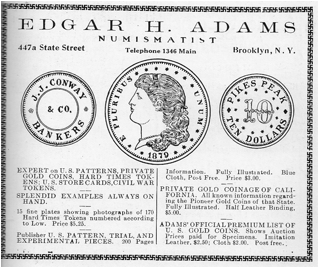
In January 1908 Adams was appointed by the president Archer M. Huntington to the ANS Standing Committee on United States Medals. In the September 1908 issue of Mehl’s Numismatic Monthly, Adams published an article, "The Value of Numismatic Societies". Certainly, Adams could appreciate the invaluable service numismatic societies afford those who wish to pursue dedicated research in this field being a member of the ANA, ANS, New York Numismatic Club, Chicago Numismatic Society, and British Numismatic Society.
He was a charter member in 1908 of the New York Numismatic Club (NYNC), where he served as Treasurer from 1908 to 1911. In July 1909 he exhibited at the NYNC his rare 1882 Silver Dollar Pattern piece designed by George T. Morgan.
 His first-known published numismatic monograph : Adam’s Official Premium List of United States, Private and Territorial Gold Coins Indicated by Prices Brought at Public Coin Sales. Illustrated by Walter E. Blythe. (New York : Willett Press, 1909), comprised 72 pages of text and 171 illustrations of obverse and reverse designs of gold coins and ingot bars.
His first-known published numismatic monograph : Adam’s Official Premium List of United States, Private and Territorial Gold Coins Indicated by Prices Brought at Public Coin Sales. Illustrated by Walter E. Blythe. (New York : Willett Press, 1909), comprised 72 pages of text and 171 illustrations of obverse and reverse designs of gold coins and ingot bars.
He is the author of an unpublished monograph, American Rare Coin Counterfeit Detector, begun in 1910 and fully described in the February 1910 issue of The Numismatist. As he was photographing coins for this book he ran a public notice in The Numismatist, "Colonial Counterfeits Wanted," May-June (1910) : 145, looking for certain specimens he was lacking. According to the 1910 U. S. Census report he was working as a numismatist in a store. Which coin shop he was affiliated with is not clear since he may have been independent and rented desk space in any store.
His involvement with gold coinages caused him to be the voice at the 1910 ANA New York Convention to the U. S. Mint to revert back to the former frost proof finish on gold proof coinages.
On February 10, 1911 he held his only coin auction and published the catalog and prices realized sheet of the duplicates of rare pattern pieces belonging to William H. Woodin at the auction rooms of Daniel R. Kennedy, New York. The catalog : Rare Pattern Coins, Comprising Many Pattern Duplicates of Mr. William Woodin, contained nine photographic plates though the original notice of the free catalog promised two or more. The catalogue was privately printed in Brooklyn, New York by the author in green paper and green card stock covers.
Also, beginning in 1911 he published the initial installment of : Private Gold Coinages of California, 1849-1855 : Its History and Its Issues, originally intended as a series of articles to be published in the American Journal of Numismatics, Volumes 45-46 (1911-1912), in eight parts. In October 1911 it was issued in off prints as four issues in paper wrappers, sometimes bound variously by purchasers or kept in the paper covers as issued. An advertisement of these pamphlets ran in the October 1911 issue of The Numismatist on page 385. In January 1913, it was reprinted as a single volume with a 20-page and in February a second edition a 28-page introduction, sold in half morocco binding just prior to the distribution of the final quarterly issue of October-December 1912, when American Journal of Numismatics converted to a single annual issue.
From March 1912 to July 1915 he served as the first salaried editor and publisher of he Numismatist, as an ANA owned publication at the rate of $720 per annum plus expenses. Beginning in May 1912, the masthead lists him as editor and business manager, rather than publisher. The correction of the ANA as publisher is clarified in the December 1912 issue of The Numismatist on page 469. He was succeeded as editor in August 1915 by Frank G. Duffield.
Also, in 1913, his most acclaimed masterpiece and classic work was co-authored with William Hartman Woodin, the future Secretary of the Treasury under Franklin Roosevelt (from March 4 to December 31, 1933) : United States Pattern, Trial and Experimental Pieces. American Numismatic Series No. 1 (New York: American Numismatic Society, 1913). The book announcement was in a full-page advertisement in the March issue of The Numismatist on page 177. The Deluxe Edition in full Morocco was limited to fifty copies. The Regular edition was bound in dark blue cloth.
Two other 1913 publications are : first, New York City and State Store Cards. (New York Numismatic Club, 1913). Second, Hard Times Tokens Illustrated in fifteen photographic plates of 170 varieties with the corresponding number given in Low’s Hard Times Tokens.
In 1920 he published with Wayte Raymond a book on the history of American merchant’s store cards and checks entitled : United States Store Cards: A List of Merchants’ Advertising, Checks, Restaurant Checks and Kindred Pieces Issued from 1789 up to Recent Years (New York : E. H. Adams & W. Raymond, 1920). Also, he published a 24-page Fixed Price List of "United States Store Cards" Numbered According to List Prepared by Edgar H. Adams in 1920.
In 1929 he published the Catalogue of the Collection of Julius Guttag, illustrated with halftones : Catalogue of the collection of Julius Guttag, comprising the coinage of Mexico, Central America, South America and the West Indies. Compiled by Edgar H. Adams. (New York, 1929).[21]
In the 1930’s he produced two manuscripts on colonial New England coins. One covered Massachusetts silver of 1652 and the early state copper coinages of the half cent and cent. The other the Willow, Oak and Pine Tree coinages. Both manuscripts appear to have served as the working model for Sydney Philip Noe’s later works. Both manuscripts are in the ANS archives.
Sometime around 1935 he became bedridden and died on May 5, 1940 at his home, Bayville, Long Island, New York.
To read the complete article, see:
ADAMS, EDGAR HOLMES
(http://www.numismaticmall.com/numismaticmall-com/adams-edgar-holmes)

HARVEY STACK'S NUMISMATIC FAMILY, PART 82
The latest article in Harvey Stack's blog series looks at 1981 and the fallout from the silver bubble and grading certificate shenanigans. Thanks, Harvey! -Editor
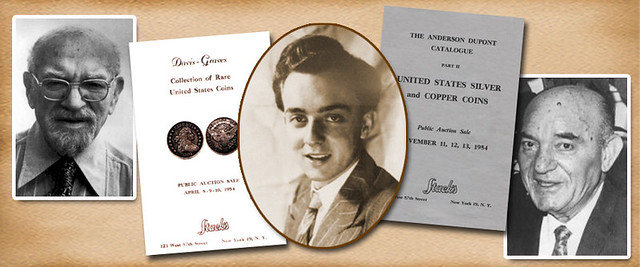
The year 1981 turned out to feature a few outstanding collections, a greater dedication at the ANA to stopping counterfeiting and "doctoring," and the stabilization of the silver market back at the original $10 per ounce. All this seemed to stimulate greater interest in numismatics, which had waned in 1980. This did not mean there were not challenges to deal with.
When the price of silver dropped on the world markets from over $50 per ounce to under $10 an ounce in a very short time, traders, speculators and coin collectors felt the sting. Speculators were forced to sell their "futures," the raw material they had bought on margin. Those who had counted on getting rich on the value of silver, were caught "short" and had to cover their losses by selling their collections or numismatic holdings. Many a bankruptcy occurred, and market confidence was damaged by all the forced sales. Such uncertainty in the metal markets of course had an effect on the rare coin market.
However, it is important to talk about the numismatic collectors who, as the market declined, either held on to what they had, or even were able to add to a cabinet at lower prices. For many collectors it was a time when collections grew in size and quality. It was an upsetting time to be a dealer. People did come in with their coins to sell (some which were influenced by the silver market), and others were scared that what they owned would lose even more value, There were people who wanted to get out of a hobby that was so susceptible to market variations that were based not on the scarcity of the items, but on the metal they were made of. Likewise, as a business, Stack's had to watch the fluctuations of the metal markets and make buying decisions based on whether we would be able to resell the items without taking a loss.
We were concerned about our clients who had open accounts with us that might result in us sustaining a loss. The drop in value was ruthless, and many dealers and traders lost so much that they were forced to declare bankruptcy and there were shops and offices that closed.
Stack's, like other dealers around the country, had a large, paid for inventory, and we decided to sit things out, keep our business alive, and to continue to serve our clients the very best we could. The retail business did drop, but our public auction business, which presented nine sales in 1981 did help keep things level, as scarce, rare and desirable coins came to market. To our surprise, collectors and dealers did attend the sales or mail in bid sheets, trying to acquire rare and nice coins from the collectors or estates that we were able to offer. So, we continued to serve both buyer and seller, although at lower levels than before. If speculators were still in the field, they were attracted to gold coins, for throughout history gold had been a stabilizing commodity. But every deal was a challenge, and there were many sleepless nights we all suffered during this period.
An additional challenge that arose during this time was a type of fraud that centered around the grading certificates issued by the American Numismatic Association Certification Service (ANACS). ANACS was providing a valuable service by reviewing coins and offering a professional opinion as to authenticity and grade, and helping collectors to avoid fake or doctored coins. When the service began, it gave buyers a feeling of confidence that they were getting what they paid for. The use of the published ANA grading standards meant that there was more consistency in grading opinions. When coins were sent into ANACS they were graded and sent back to the owner with a photograph and grade opinion.
However, after a year or so, it was realized that there was no way to "attach" the coin to the photo/grading certificate. A number of scoundrels realized that they could make money by submitting beautiful coins to ANACS, getting back a grade opinion that said it was a superior coin, and then selling this certificate with a lower quality coin. While the ANACS photographs were good quality, they did not necessarily show enough detail to stop this kind of swindling. Once they had used the certificate for a lower quality coin, the scoundrels could submit the high quality coin again and receive another certificate.
It was not long before the numismatic community learned of this practice, and many of the scammers' victims lost money on their purchases. At the time there was not much that ANACS could do. The Professional Numismatists Guild spent much time trying to stop this form of stealing and had success in their endeavors. Some of the perpetrators were caught and some buyers got their money back. The practice continued, however, and it became evident that coin certification required more safeguards to protect the collector. In the mid 1980s, the Professional Coin Grading Service and the Numismatic Guaranty Corporation entered the coin certification field, changing it forever by placing the coins in plastic "slabs" with the grades on the labels. Eventually other grading entities, including ANACS, also followed this path, and people became more confident that they were getting what they paid for.
Of course, in 1981, there was a large number of professional numismatists and collectors who had the experience and expertise to know when a coin was graded correctly. It was as important as ever that collectors learn about coins and grading and deal with reputable sellers. Stack's continued to serve retail and auction clients and offer the expertise that had been gained over decades and generations. Still, there was an underlying feeling of doubt that existed in the coin market, and this affected prices, even when items were from old time collections.
To read the complete article, see:
Harvey Stack Remembers: Growing up in a Numismatic Family, Part 82
(https://www.stacksbowers.com/News/Pages/Blogs.aspx?ArticleID=harvey-stack-remembers-part-82)
To read the earlier E-Sylum article, see:
HARVEY STACK'S NUMISMATIC FAMILY, PART 81
(https://www.coinbooks.org/v23/esylum_v23n43a17.html)
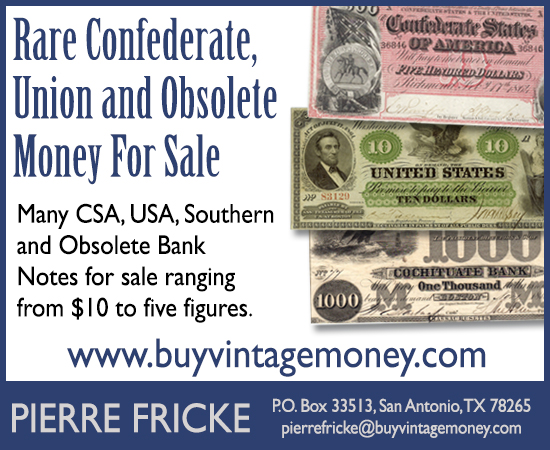
HARVEY STACK ON NEW YORK'S NUMISMATIC DISTRICT
Harvey Stack submitted these thoughts inspired by Paul Bosco's article on the new New York numismatic district. Thanks, Harvey! -Editor
Paul Bosco's ( N.Y. Numismatic Walking Tour" was great to read and did awaken my memories of how Numismatics moved North in New York, following the directions set forth by the "Carriage Trade". As Lower New York got crowded with businesses and homes in the early 1900's the city started to move northward on Manhattan Island.
Starting at the Bowery, the lowest point of Manhattan, jewelers, banks, residences and businesses in general moved North. The earliest moves were to the 20's and 30's, from Park Ave to Broadway centered near the new department stores, Macy's and Gimbels near 34th Street. The two stores, MACY'S and GIMBELS , were really anchor locations and many businesses opened near them if possible. They attracted the multitude of shoppers who came to the area for quality and service of clothing and furniture.
The jewelry trades and antique shops from lower New York, moved up with them. It was the major shopping relocation in Manhattan. A group of Coin Dealers, Stamp dealers, Antique and Fine Art dealers followed them and relocated STACK'S opened a shop on 23rd Street and Sixth Avenue, near the jewelers. It had great transportation available, with an elevated train service and bus service and therefore easy to get to. The walk-in shop was a great attraction. and though for the first years at this location, they also had a Postage Stamp Department, Numismatics was their prominent business.
Other coin dealers occupied the area as STACK'S was a drawing card, and they included David Proskey, Wayte Raymond and Scott's Stamp and Coin. All occupied upstairs offices which required walking up a few flights of stairs or taking an elevator. Going off the street was not popular and many people had the fear of shopping above street Level.
When in 1939 and somewhat later Stack's moved, (with the Jewelry and antique dealers further north, mostly in the 1940's before World War II, and established the streets between 42nd Street 52nd Street between Madison Avenue, Fifth and Sixth Avenue) which became the new UPTOWN ELITE SHOPPING CENTER FOR NEW YORK.
STACK'S found location on 46th Street, just off 5th Avenue which became the epicenter for Hobby shoppers, Jewelers and Fine Antiques. It was near the new subway on 6th Avenue and had nearby bus service.
Coin Dealers and other hobby shops located nearby, and the ones that Paul Bosco discusses drew collectors to the area. However he did not discuss some that were noted dealers in the area, i.e. R.M.Smythe, F.C.C.Boyd, Park Benet Galleries, N.Y,. Stamp and Coin, Wayte Raymond, Scott's, N.Y. Stamp and Coin, Barney Bluestone, Henry Grunthal, Jacob Hirsch, Max Kaplan, Manhattan Coin Co., Herb Melnick, Louis Werner, to mention just a few that were all within walking distance of 2 to 5 streets from STACK'S.
A few blocks further north on or near 5th Avenue were Isador Scheider and Ed Gans, also walking distance from the "Numismatic Walking Center". Both specialized in Ancient and Foreign gold, silver and copper coins.
If you didn't mind a short walk going back downtown, you could find both Macy's and Gimbels Department Stores, each have a Rare Coin and Rare Postage Stamp Department. The most successful of these was the Gimbels Operation with the Stamp Department operated by Minkus Stamp Company.
However the leader in the Department Store operation was Gimbels Numismatic Department, operated by Capital Coin Company, under the direct ownership of both Jack and Robert Friedberg. It grew to become a very large operation as a department store coin hobby center. As Gimbels expanded its various locations after World War II, the company had opened and operated 33 different locations, with the full control of the New York Base office. 'Til the passing of Robert Friedberg they were very successful for several decades.
All of the names and locations mentioned above were very successful through the 1960's and early 70ths, till the owners retired or passed away. Unfortunately few survive today.
STACK'S has survived virtually all of those famous and popular names of the past, and for 87 years led the coin industry in developing the hobby, as a Numismatic Center and "club house" in New York.
If one wanted to see more coins and learn more, years ago within 4 blocks from our 46th offices an important museum opened, The Chase Manhattan Money Museum, which had special exhibits and lectures on weekends, or a short taxi ride the Metropolitan Museum of Art, the Museum of Natural History, Jewish Museum or the Morgan Library, to see the extensive exhibits each had. Or one could taxi to the American Numismatic Society's Museum and offices and see some of the rarest and most exciting rare coins, from the Early Ancient Period till the 20th Century, from the Ancient world and modern times. Another highlight, but requiring a taxi or subway to get there. It's worth the trip!!!
I have been with the company since 1947 full time, well over 70 years and enjoy meeting with our old friends, current clients and dealers who visit us annually in not more often.
STACK'S has maintained itself for all these decades, passing on the running and conducting of the Rare Coin Business, the Conducting of Public Auctions, being officers in the Professional Numismatic Guild, active in the ANA and other clubs and organizations dedicated to Numismatics, building several of the most important and complete Collection ever formed and worked to develop the youth who wanted to learn about coins and collecting them. We have joined and created Stack's Bowers in the early part of the 21st Century, dedicated ourselves to the continued advancement of the hobby. We hope it stays that way for at least the next century.
NEW YORK WAS GIVEN THE TITLE "THE NUMISMATIC CAPITAL OF THE WORLD" BY MANY WHO VISITED, WALKED AND TRAVELED ABOUT OUR CITY, VISITED AND PARTICIPATED IN MANY NUMISMATIC EVENTS THAT THE CITY DURING THE MANY DECADES IT HAS ENJOYED ITS LEADERSHIP AS A "NUMISMATIC HOBBY CENTER."
STACK'S HAS ALWAYS BEEN CONSIDERED A "NUMISMATIC LANDMARK" because of its location and warmth they offered to all who visited.
STACK'S BOWERS is still dedicated to the growth of Numismatics, teaching the Economics of Money, and how it affects the Economy and the history that can be found on the coins and medals that make up the major assets the hobby offers.
Other cities and towns about America have coin shops and hobby centers for collectors to have available to enhance the growth of their Numismatic collections, but NONE have had the number of dedicated professionals available that New York City offers them, yesterday, today and tomorrow.
Might I recommend that when you can, visit New York and see what it can offer you to enhance your coin collection.
To read the complete article, see:
NEW YORK'S NEW NUMISMATIC WALKING TOUR
(https://www.coinbooks.org/v23/esylum_v23n44a10.html)

COLTRANE NORTH CAROLINA CURRENCY
Stu Levine, Bruce Hagen, and Maureen Levine submitted this preview of North Carolina currency lots in the upcoming Heritage sale of the Mike Coltrane Collection, Part 1. Thanks! -Editor
Spans Over 200 Years in an Unreserved Special Online Auction
A diverse offering of North Carolina currency, spanning over 200 years, is featured November 29, 2020, in an unreserved special online auction by Heritage Auctions. The notes collected by Mike Coltrane for several decades include many elite types and varieties from the Colonial, Obsolete, and National Banknote series and form a panoramic narrative of currencies from Mike’s native state. Noteworthy is a complete 56-note typeset, offered individually, of the April 2, 1776, Halifax colonial issue. This complete suite has been achieved by only a handful of collectors, and we believe this is the first modern offering of all 56 different notes in one auction.
Obsolete banknotes from virtually all issuing banks and local branches illustrate the complexities North Carolinians met with using paper currency during the antebellum period. National Banknotes range from very rare late Civil War-period First Charter notes to 1929 small size examples, emitted across numerous towns. These include several rarities from the state, with many new to the census and being auctioned for the first time. We hope you will take the time to peruse this important offering exemplifying North Carolina’s rich financial history.
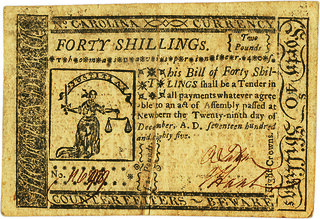
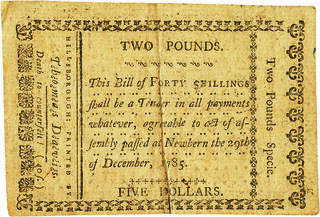
North Carolina December 29, 1785 40 Shillings Justice Fr. NC-215 PMG Choice Extremely Fine 45 EPQ
One the finest known notes from the final North Carolina Colonial issue. Mike acquired this razor-sharp example nearly a quarter-century ago, and it is certified for the first time. Lot 95166.
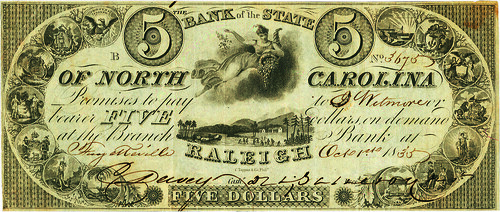
Fayetteville, NC - Bank of the State of North Carolina $5 Oct. 1, 1835 NC-60 G164 SENC PMG Very Fine 30
This is a rare and stylish Toppan-engraved series Bank of the State of North Carolina Fayetteville branch $5 note. It is high grade and one of very few fully issued notes of the type known. Lot 95202.


Wilmington, NC - $100 1882 Date Back Fr. 571 The Murchison National Bank Ch. # (S)5182 PMG Very Fine 25 Net
Only three banks from North Carolina issued $100 notes of this type, but the sole six recorded survivors currently are from this same title. It was last sold in 2012. Lot 95375.
This important collection, featuring 385 lots, will be auctioned online on Sunday, November 29, 2020, commencing at 6:00 PM Central Time (7:00 P.M. Eastern). Lot viewing is available by appointment only at Heritage’s Office in Dallas; contact Jose Berumen at JBerumen@ha.com or 214-409-1299. All lots are currently on view and open for bidding now at ha.com/62155.
To read the earlier E-Sylum articles, see:
COLTRANE COLLECTION SELECTIONS PART 1
(https://www.coinbooks.org/v23/esylum_v23n41a22.html)
COLTRANE COLLECTION SELECTIONS: BACK DESIGNS
(https://www.coinbooks.org/v23/esylum_v23n42a25.html)
COLTRANE WAR OF 1812 TREASURY NOTES
(https://www.coinbooks.org/v23/esylum_v23n43a25.html)
COLTRANE COLLECTION PART I U. S. CURRENCY PREVIEW
(https://www.coinbooks.org/v23/esylum_v23n44a18.html)
THE CROW, THE PITCHER, AND THE PEBBLE
(https://www.coinbooks.org/v23/esylum_v23n44a25.html)
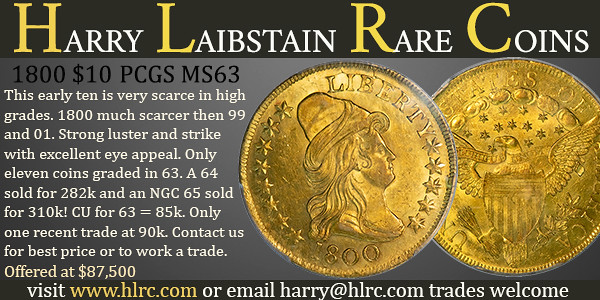
AZERBAIJAN MUSEUM DISPLAYS ANCIENT COINS
A museum in Azerbaijan has some coin finds on display. -Editor
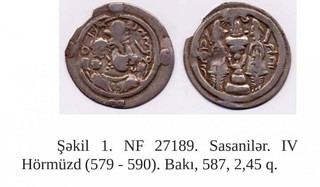 The National History Museum's Archaeological Fund has displayed silver coins found in 1958 in Ibrahimhajili village of Tovuz region.
The National History Museum's Archaeological Fund has displayed silver coins found in 1958 in Ibrahimhajili village of Tovuz region.
The find was handed over to the museum thanks to numismatist Ali Rajabli. The silver coins were minted in Derbent, Barda, Baku, Nakhchivan and other cities during the reign of the Sassanid kings - Gubad I, Khosrov I, Hormuz IV and Khosrow II.
One of the coins was minted to honor the 14th year of the second reign of Gubad I (531), while another one was dedicated to the 27th year of the reign of Khosrow II (617).
The coins depict the emperor wearing a crown, surrounded by religious expressions in the Pahlavi language, his name with the title of the ruler. There are also moon, stars and other symbols on the coin.
On the reverse side, there is an altar and two guards. Monograms are engraved on the right side of the coin.
Azerbaijan National Museum of History is one of the architectural pearls of the country, dating back to the 19th century. The largest museum in the country was originally the private residence of Haji Zeynalabdin Taghiyev, who was the famous national oil baron remembered for his generous philanthropy.
Over 300,000 items are assembled in 10 collections in the museum, including a valuable library consisting mainly of unique books.
To read the complete article, see:
National History Museum displays ancient coins [PHOTO]
(https://www.azernews.az/culture/172073.html)
THE BOOK BAZARRE
PAKISTAN NUMISMATIST SHAKEEL AHMAD KHAN
An article published November 2, 2020 profiles Pakistani numismatist Shakeel Ahmad Khan of Lahore. -Editor
 The pursuit of passion is a priceless endeavor, to which many dedicate their entire lives.
The pursuit of passion is a priceless endeavor, to which many dedicate their entire lives.
No different is the story of Kasur District’s Shakeel Ahmad Khan, who’s spent two decades of his youth building one of the most extensive private collection of coins and currency notes in the country.
The young numismatist’s collection features more than 250,000 banknotes and coins from over different 250 countries. Among his treasury are also coins dating back to 2,500 year ago, attributed to Macedonian king Alexander the Great as well as all memorial currency issued by the Islamic Republic of Pakistan to-date.
"I discovered the hobby some 20 years ago, when a family-friend handed me some Canadian coins. That day onwards I started collecting every interesting coin I came across, but it still did not occur to me that this was a real hobby until I graduated from university. Before that, I was only hoarding but my passion really took off when I started learning about the coins and their history," said Khan.
Other than all kinds of currency, Shakeel Ahmad Khan’s collection also features over 10,000 commemorative stamps from various time periods. Whereas, his extensive treasury of 250,000 coins and currency includes 20,000 coins, 5,000 currency notes and over 800 memorial coins of varying values from different parts of the world.
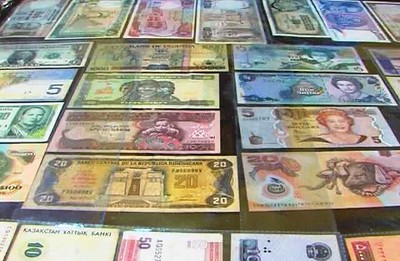
"For the first few years after independence, Pakistan did not have any currency of its own. We extensively relied on over-printing on existing British-era banknotes. Today, these notes are quite rare to find, but I have more than a few preserved in collection. Similarly, Pakistan’s first currency notes were printed in England, since we still did not have any currency printing operations of our own. I have those notes too, along with coins from various empires and dynasties of the subcontinent, including the Mughal period, the Sikh rule and the reign of the British East India Company."
According to Shakeel Ahmad Khan, who is also well-versed in regional history, currency notes were first issued in the Indian sub-continent during the rule of Queen Victoria. "I have notes too as well as coins and currencies from all the empires that came and went; countries around the globe and even those which you can no longer spot on a map," the collector told.
To read the complete article, see:
High-cost hobbies : Kasur numismatist in pursuits of rare currencies
(https://tribune.com.pk/story/2270700/high-cost-hobbies-kasur-numismatist-in-pursuits-of-rare-currencies)

ISRAEL ANTIQUITIES AUTHORITY COIN COLLECTION
Howard Berlin passed along this Times of Israel article and video about the Israel Antiquities Authority coin collection. Thanks. -Editor
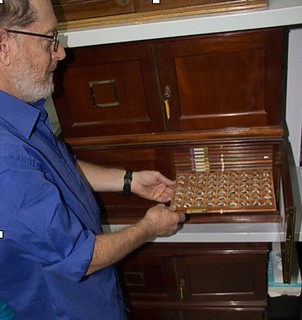 There are some 750,000 coins stored in one room in a well-protected Israel Antiquities Authority vault and Donald T. Ariel, the head of the IAA’s Coin Department, stands watch over them all.
There are some 750,000 coins stored in one room in a well-protected Israel Antiquities Authority vault and Donald T. Ariel, the head of the IAA’s Coin Department, stands watch over them all.
Ariel, who immigrated to Israel from the United States, has headed the department since 1991. He is the editor of the Israel Numismatic Research journal and serves as the coin expert on several ongoing excavations in the country. He took The Times of Israel Community on a virtual tour of the history of Holy Land coinage and pulled out some of the IAA’s treasures during a recent Behind the Headlines conversation.
The foundation of the coin collection is housed in mahogany wood boxes built by the British Mandate almost 100 years ago. The original boxes stand to one side, segregating the collection, which was amassed through purchases from coin dealers, versus the excavated coins the IAA holds in boxes made for nuts and bolts that are made in the coastal Israeli city Holon.
"They’re perfect for what we do and each coin is in an envelope," explains Ariel matter-of-factly.
The IAA collection spans from the beginning of coinage at the end of the 7th century BCE until today — with some registered coins dating to the 1970s and 1980s. The bulk of the coins date to the Hellenistic-Seleucid-Hasmonean period of the 2nd and 1st centuries BCE, and there’s a second peak in the 4th and 5th centuries CE, the early Byzantine period, says Ariel.

The coins in the Mandate period collection were largely purchased, a practice discontinued by the State of Israel.
"The Mandate authorities had a budget to buy coins. They went to the Old City and they would buy beautiful coins for very cheap back then. The State of Israel does not have any budget to buy coins, which I think is terrific: We have concentrated on working on coins from excavations as they have much more value because you can learn from the strata that the coins are found in, we learn from the objects found with the coins, and we’re able to date the archaeological excavations and also learn about coin currency. These are things you cannot learn from purchased coins," he says.
To read the complete article, see:
WATCH: Israel Antiquities Authority coin head displays treasures from the vault
(https://www.timesofisrael.com/watch-israel-antiquities-authority-coin-head-displays-treasures-from-the-vault/)
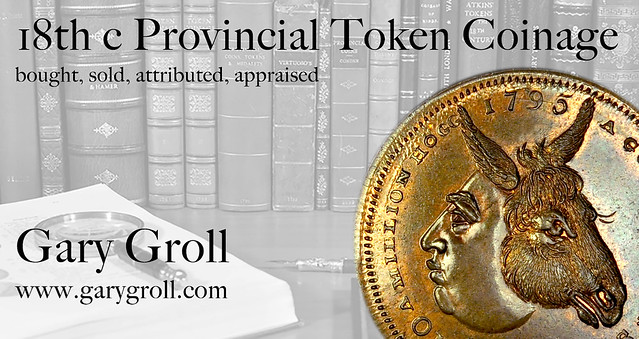
COINS FOUND AT MARYLAND PLANTATION
Dick Hanscom passed along this Daily Mail item about the discovery of coins and other belongings at a Maryland plantation. Thanks. -Editor
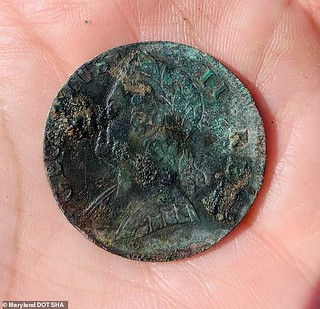 Archaeologists have uncovered the remains of 300-year-old slave quarters at Newtown Neck State Park in Maryland that was the location of an 18th-century Jesuit plantation.
Archaeologists have uncovered the remains of 300-year-old slave quarters at Newtown Neck State Park in Maryland that was the location of an 18th-century Jesuit plantation.
The team, along with the Maryland Department of Transportation State Highway Administration (MDOT SHA), identified structures of cabins, along with broken clay tobacco pipes, ceramic cups and other signs from those who were enslaved at the plantation.
The artifacts sit 'just a stone's throw' from an 18th century brick manor that was once occupied by Jesuit missionaries and early documentation notes the sale of 272 slaves from the area in 1838 – including those who lived at Newtown Manor.
The money gathered from selling those slaves, which amounts to about $3.3 million in today's dollars, was organized by Georgetown University presidents and used to pay some of the college's debt.
'If there was ever a place in Maryland that holds the story of diverse cultures converging to find religious freedom in an environment of conflict, sacrifice and survival, it is here.'
Archaeologists found the slave quarters were built underground, but were able to identify the cabins because the surrounding soil had not yet eroded, CNN reports.
To read the complete article, see:
Slave quarters dating to the 18th century are unearthed at Jesuit plantation in Maryland revealing remains of cabins, tobacco pipes, coins and other personal belongings
(https://www.dailymail.co.uk/sciencetech/article-8910703/Slave-quarters-dating-18th-century-unearthed-Jesuit-plantation-Maryland.html)
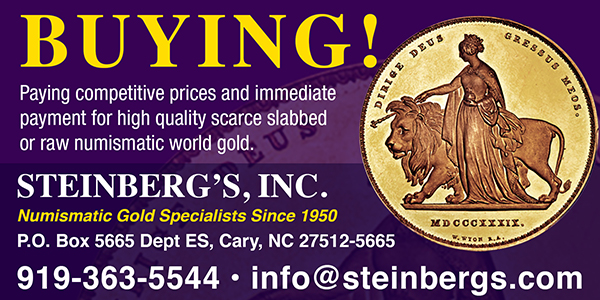
ZOOMISMATICS: STACK'S BOWERS LARRY MILLER EVENT
In the I-wish-I'd-invented-that-word department comes this Stack's Bowers announcement of a "Zoomismatics" event, a live online forum using the Zoom platform so popular today. Here's an excerpt from the email announcement. -Editor
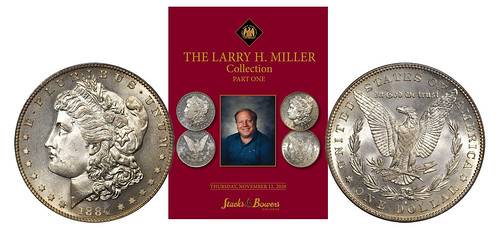
You are invited to an Auction Preview on Zoom of Part 1 of the Larry H. Miller Collection taking place on Monday, November 9 at 3:00 PM Pacific Time.
This first tranche from the Miller Collection—to be sold in an unreserved auction on Thursday, November 12, 2020—includes complete sets of Lincoln Cents, Buffalo Nickels, Mercury Dimes, Standing Liberty Quarters, and Walking Liberty Half Dollars, chiefly in grades of MS-65 or finer. Also included is one of the finest sets of Morgan Dollars ever assembled, with innumerable highlights led by an astounding 1896-S graded MS-69 by PCGS, with CAC approval. The overall quality presented in the collection is absolutely outstanding, reinforced by the overwhelming approval from CAC and the quantity of old-style certification holders. While this set represents just one of his many accomplishments within United States numismatics, Larry H. Miller will surely be remembered as one of the greatest collectors to conquer the Morgan dollar series.
Please join Stack’s Bowers numismatists Vicken Yegparian and James McCartney as they navigate through Larry Miller’s incredible collection and discuss select highlights. Questions about any of Larry Miller’s lots will be welcome from all attendees during the Zoom event and will be answered in real time by Vicken and James. And to protect the privacy of all participants, all attendees and questions will remain anonymous.
For more information, or to register, see:, see:
SBG Auction Preview: The Larry H. Miller Collection, Part 1
(https://us02web.zoom.us/webinar/register/WN_kmPjNStgQYaS-5AdfscFXg)
A related article by Jeff Garrett published by NGC discusses the American Numismatic Association's adoption of the Zoom platform. -Editor
One of the ANA's greatest developments in years has been the widespread adaptation of Zoom. It is just what the doctor ordered to cure the ANA’s online education dilemma. Instead of investing hundreds of thousands or even millions of dollars that would be nearly impossible to recover, the Zoom platform comes at a manageable fee and allows the ANA to connect with hundreds of individuals at once.
The ANA Summer Seminar was replaced with Webinars that were hugely successful. Over 400 people signed up for some of the live events with thousands more watching the recorded classes after the seminar. Most of the reviews have been outstanding, and the ANA webinars have become a new and important pillar of the ANA educational offerings.
To read the complete article, see:
Jeff Garrett: Zoom Saves the Day
(https://www.ngccoin.com/news/article/8683/)

TRIPLE COUNTERMARKED COIN EXAMINED
Stack's Bowers Senior Numismatist and Cataloger Jeremy Bostwick published a blog article this week on an interesting counterstamped piece in the Matthew Orsini Collection to be offered by the firm in January 2021. -Editor
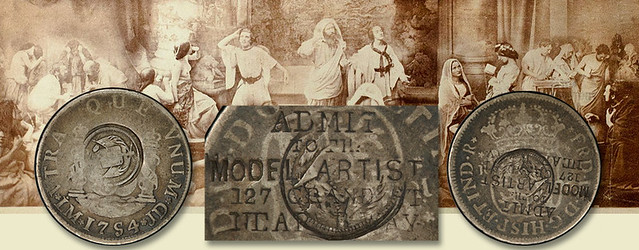
Countermarks have long served in the role of "repurposed numismatics," with a host coin issued under the auspices of one authority being appropriated by another sometime down the road. The concept of repurposing coins is not new, and often involves the melting down of a coinage seized, for example, during a war and then giving it new life when re-coined. Such production need not be so ambitious, however, as the original coin can, rather more conveniently, be altered simply with a stamp that conveys the new authority or usage while not attempting to hide the coin's original issuer or purpose. As there would sometimes be no clear connection between host and subsequent countermark, this field of collecting creates some rather unusual pairings and historical blending on the same piece. Nowhere is this more the case than a particularly extraordinary and unique 18th century silver issue that is featured in the Matthew Orsini Collection to be offered in January 2021.
Struck in the Peruvian capital city of Lima in 1754, this well circulated 2 Reales presents not one, but three different countermarks, with each chronicling the host's travels throughout the western hemisphere. The first, placed inverted over the crowned coat-of-arms, was applied for the Franklin Museum, an establishment owned by George Lea and in operation just off Broadway in New York City during the mid-late 1850s. The countermark rather clearly shows the trajectory of this South American piece, placing it in the bustling heart of the United States a century after it was minted. Further, the Mint Act of 1857 demonetized foreign issues in domestic transactions, which could account for it gaining this "second life" as an establishment ticket. Or, it could account for it entering its "third act," moving southward again to Central America.
This return voyage to Latin America is evident upon the shield side, with a 'type V' El Salvadoran countermark -- directly across the Franklin Museum stamping -- signifying that it was an approved coin of the realm as of 1868. Quite interestingly, a third countermark on the pillars side adds a final, and entirely superfluous, footnote. Intended for British coins to further legitimatize them in El Salvador, this countermark serves no actual purpose, as the host coin is clearly from Latin America. The only explanation is that someone unfamiliar with English merely saw the English-reading countermark of George Lea, assumed that the coin was British, and "validated" it with the 'type VII' countermark. There would otherwise be no need for this final marking.
Circling back to the focus of the initial countermark, the Franklin Museum acted not as an erudite, academic institution as the "museum" moniker would imply, but rather as a more adult-themed venue for the entertainment of men. Calling their offerings tableaux vivants lent a more high-brow façade, however these establishments were home to shows that acted as forerunners to burlesque shows. Performances featured semi-nude and even fully-nude women in various artistic plays, allowing the acts to pass, at least prima facia, as wholesome, even if, in reality, they merely served to titillate their audience. Admission started at 25 cents for a box seat, with prices rising for closer or more private seating. Given the denomination of the present countermarked piece, the 2 Reales was equivalent to a quarter, likely meaning that this pass admitted the bearer to one of the box seats. It is easy to see that the present unique offering would have countless stories to offer if only it could talk.
To read the complete article, see:
A Thrice Countermarked Tour of the Americas
(https://www.stacksbowers.com/News/Pages/Blogs.aspx?ArticleID=a-thrice-countermarked-tour-of-the-americas)
THE BOOK BAZARRE
TOKEN AND MEDAL MAKER JOHN GIBBS
In an American Numismatic Society Pocket Change blog post, Dr. Jesse Kraft examines the career of John Gibbs, a token maker and possible counterfeiter. Here's an excerpt - see the complete article online for more. -Editor
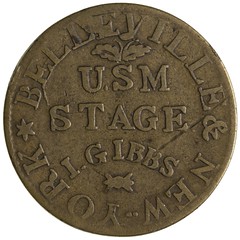
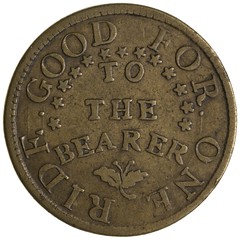
Opportunity often leads to innovation. Sometimes the events that contribute to an evolution of this nature are well-known and documented, while other times they are lost to history and only able to be speculated by present-day researchers. This is the case with the career of John Gibbs. In the course of the 1830s, his profession took a radical turn. While the exact details are currently unknown, the numismatic evidence of how his occupational path evolved creates a compelling story.
John Gibbs was born in Birmingham, England in 1809 and came to the United States as a young man with his father, William, having settled in Belleville, New Jersey. He proved to be very skillful and competent at a young age, and by 22 years old he owned and operated a stagecoach line that ran from Belleville to Newark (3 miles), and to New York City (8 miles). While little is known about the coach itself, Gibbs had a token struck for passengers to use. After purchasing a token, a passenger could simply exchange the piece for fare, and allowed Gibbs and other operators to not waste time waiting for customers to find the correct amount due or to have to provide change to customers. In 1831, this truly was an innovation and considered the first transportation token struck in the United States. On the obverse, the token reads "USM \ STAGE \ I. GIBBS | BELLEVILLE & NEW YORK," while the reverse inscription states that the token was "GOOD FOR ONE RIDE \ TO \ THE \ BEARER".
 It was also around this time that Gibbs and Joseph Gardner leased a building on the property of Stevens, Thomas & Fuller—a brass-rolling firm—under the name Gibbs, Gardner & Co. From their landlords, Gibbs and Gardner procured brass sheet stock to manufacture buttons. Like other button-manufactories (most notably those in Birmingham, England), their skills came in handy to produce base-metal coinages during times of coin shortages. As a result, Gibbs, Gardner & Co produced some of the earliest Hard Times tokens in the mid-to-late 1830s for a plethora of private firms. He even made one for himself that states "J. GIBBS MANUFACTURER \ OF \ MEDALS \ AND \ TOKEN \ &c. | BELLEVILLE \ NJ." The reverse displays a brigantine with the inscription "AGRICULTURE AND COMMERCE".
It was also around this time that Gibbs and Joseph Gardner leased a building on the property of Stevens, Thomas & Fuller—a brass-rolling firm—under the name Gibbs, Gardner & Co. From their landlords, Gibbs and Gardner procured brass sheet stock to manufacture buttons. Like other button-manufactories (most notably those in Birmingham, England), their skills came in handy to produce base-metal coinages during times of coin shortages. As a result, Gibbs, Gardner & Co produced some of the earliest Hard Times tokens in the mid-to-late 1830s for a plethora of private firms. He even made one for himself that states "J. GIBBS MANUFACTURER \ OF \ MEDALS \ AND \ TOKEN \ &c. | BELLEVILLE \ NJ." The reverse displays a brigantine with the inscription "AGRICULTURE AND COMMERCE".
Soon, his business began to thrive. Locals began to call the establishment "The Belleville Mint," and other orders came in, most notably from individuals in the Montreal, Quebec area beginning in 1836. These were in the form of the "bouquet sou" tokens of Lower Canada. The Belleville Mint was not the first to strike these pieces, as a mint in New York State struck 500,000 pieces for the Bank of Montreal the previous year. These tokens proved popular in fulfilling the need for small change, and other individuals began to speculate on the them. In 1836, exchange broker, Dexter Chapin, commissioned the Belleville Mint to strike bouquet sou tokens and imported them into Lower Canada. While the quantity is not currently known, the Belleville Mint used at least 13 sets of dies, so it was, by no means, a trifling amount. These are, essentially, imitations of the pieces commissioned by the Bank of Montreal. Ultimately, others in Birmingham, England and Montreal also created dies and struck coins for this issue.
The Belleville Mint also purportedly struck copper coins for Liberia, Brazil, and Haiti - see the article for more. Fascinating history. -Editor
To read the complete article, see:
JOHN GIBBS: STAGECOACH OPERATOR TURNED TOKEN INNOVATOR, TURNED COUNTERFEITER
(http://numismatics.org/pocketchange/gibbs/)
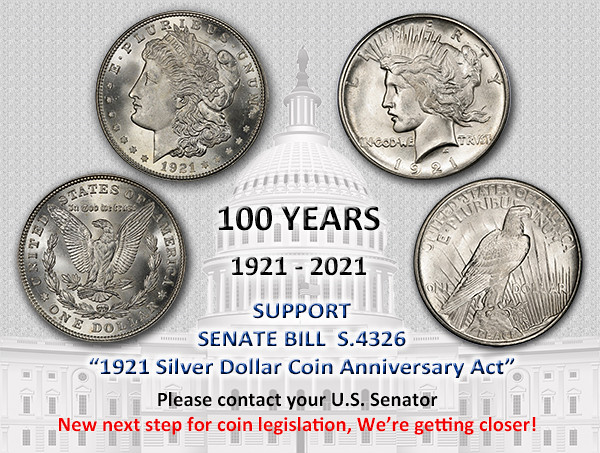
HISTORY OF GERMANY’S BLUE MAX MEDAL
This article from The National Interest covers the history of Germany's famous "Blue Max" medal. -Editor
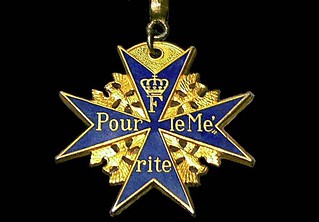 While the name is in French rather than German, the "Blue Max" is an award that has become nearly legendary. The origins date back to 1667 when the German state of Brandenburg introduced the Order of Generosity or Ordre de la Génerosite. The name was in French as it was the common language of many German courts of the day. This award was later renamed the Pour Le Mérite (For Merit) by Prussian King Friedrich the Great in 1740 and was issued to loyal subjects for meritorious service in the pending war over the lands of Silesia. More commonly known today as the "Blue Max"—in no small part due to the book and film of the same name—this is among the most famous Imperial German decorations.
While the name is in French rather than German, the "Blue Max" is an award that has become nearly legendary. The origins date back to 1667 when the German state of Brandenburg introduced the Order of Generosity or Ordre de la Génerosite. The name was in French as it was the common language of many German courts of the day. This award was later renamed the Pour Le Mérite (For Merit) by Prussian King Friedrich the Great in 1740 and was issued to loyal subjects for meritorious service in the pending war over the lands of Silesia. More commonly known today as the "Blue Max"—in no small part due to the book and film of the same name—this is among the most famous Imperial German decorations.
It was Prussia’s highest military award and was in fact given not for individual acts, but rather for repeated and continual gallantry—hence it was often awarded to pilots during World War I. This award should not be confused with its civilian counterpart, which is still awarded to this day. Likewise, while it was a Prussian award but when the King of Prussia became the German Kaiser after the unification of Germany in 1871 it was awarded to all German soldiers. A total of 1,687 were awarded during World War I. A higher-level award, usually given to recipients of high rank, featured golden oakleaves mounted on a suspension ring. This version was issued 122 times.
Furthermore, unlike the American Medal of Honor or England’s Victoria Cross, the recipient of the award needed to be among the living and the Pour Le Mérite was not awarded posthumously. Sadly, during World War I many German soldiers died while the paperwork for their awards was being considered. It should also be mentioned that unlike many other medals soldiers in the field wore this one on their uniform.
A civil class of the award was created in 1842 by King Frederick William IV of Prussia as the Order Pour le Mérite for Sciences and Arts (Orden Pour le Mérite für Wissenschaften und Künste). It included three sections for the humanities, natural science and the fine arts.
Today the Pour Le Mérite is a highly rare medal, and even very few advanced collectors of German medals have one in their collections. Originals range in price from $15,000 to $20,000 today, and while the award was not formally issued after 1918 it was produced in limited numbers following World War I. Three different firms were charged with producing the award from 1914 through 1918 and the same dyes were used in the 1920s explains Stephen Previtera, author of Prussian Blue: A History of the Order Pour le Mérite "These were created for World War I veterans who had not received their award."
To read the complete article, see:
Pour Le Mérite—The History of Germany’s Famous ‘Blue Max’
(https://nationalinterest.org/blog/buzz/pour-le-m%C3%A9rite%E2%80%94-history-germany%E2%80%99s-famous-%E2%80%98blue-max%E2%80%99-171955)

THE STORY OF CANADA'S 1975 TWO-DOLLAR BILL
Here's a great story from the Bank of Canada Museum about the illustration found on Canada's 1975 two-dollar bill. Found via News & Notes from the Society of Paper Money Collectors (Volume VI, Number 20, November 3, 2020). -Editor
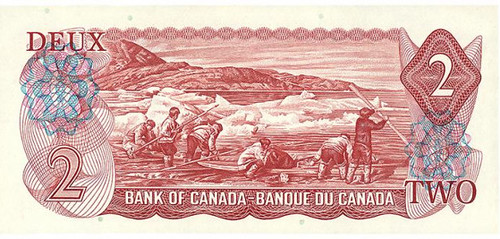
In the early 1970s, real people appeared in the vignettes on Canadian bank notes for the first time? — including Joseph Idlout and his relatives.
The hunter was Joseph Idlout. In the early 1950s, he was the leader of a small community of families, a summer hunting camp called Aulatsiivik on northern Baffin Island. At 38, Idlout was a man who had been brought up in the ancient hunting traditions of the High Arctic—a master of his craft. Everyone at the camp was part of the same traditions—except for one: documentary filmmaker, Doug Wilkinson.
Although Wilkinson was an outsider, he was nevertheless welcomed into the community. He lived among them as he filmed what would become a documentary for the National Film Board, Land of the Long Day. Wilkinson didn’t want his film to be a re-creation of pre-contact Inuit life. Instead, he sought to document Idlout and his community as they functioned at the time: a mixture of Western technologies and traditional practices. As he followed the families and their hunting activities through the brief Arctic summers, he and Idlout formed a strong friendship.
Wilkinson shot a lot of film, with both still and movie cameras. And from that treasure trove, some 23 years later, a single photograph was chosen to be made into a bank note engraving.
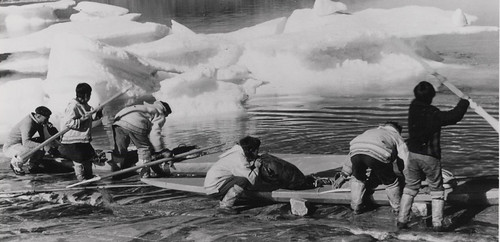
To read the complete article, see:
Joseph Idlout and the 1975 two-dollar bill
(https://www.bankofcanadamuseum.ca/2020/10/the-story-behind-the-engraving/)

LOOSE CHANGE: NOVEMBER 8, 2020
Here are some additional items in the media this week that may be of interest. -Editor
Roman coins from the war against Hannibal
Michael Shutterly published a CoinWeek article on Roman coins from the war against Hannibal. -Editor

The First Roman Quinarius
Waging war is expensive, and the Romans had to debase their currency in order to have enough coins to pay the costs of the Second Punic War; within a few years of Hannibal's invasion, Roman currency was nearly worthless. But in 212 BCE, when Rome's economic situation bottomed out, Roman armies outside of Italy began capturing enormous amounts of booty which could be used to replenish the empty treasury.
In 211 BCE, the Romans used their new-found wealth to launch an entirely new precious metal monetary system, based on a denarius that would be struck in good quality silver. The new coinage system was enormously successful and financed Rome's ongoing military efforts – when the Roman general Publius Cornelius Scipio marched against the Carthaginian armies in Spain in 210 BCE, he did so with a war chest that included 2,400,000 denari.
I always wanted to invent a new coin denomination of my own, like "the stupendius of Emperor Tiberios". Send me your own faux denominations and we'll have some fun with this. -Editor
To read the complete article, see:
Roman Coins From the War Against Hannibal
(https://coinweek.com/ancient-coins/roman-coins-from-the-war-against-hannibal/)
Collecting Political Memorabilia
In the other-stuff-a-lot-of-us-collect department is this timely article on political buttons and memorabilia. No medals or tokens pictured, however. But check out the cool "women's rights suffragette Jailed for Freedom sterling pin" that sold for $1000 in 2018. -Editor
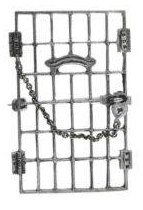 Political memorabilia used to mostly mean campaign buttons, posters, and broadsides, newspapers featuring election results headlines, and in later years, bumper stickers. But today's most-collectible political paraphernalia ain't your grandparents' election souvenirs! In fact, its often downright politically incorrect.
Political memorabilia used to mostly mean campaign buttons, posters, and broadsides, newspapers featuring election results headlines, and in later years, bumper stickers. But today's most-collectible political paraphernalia ain't your grandparents' election souvenirs! In fact, its often downright politically incorrect.
That's not to say that folks back in the day didn't seek out some pretty outrageous, outlandish, and/or oddball political collectibles, because they certainly did.
A WorthPoint search for "political memorabilia" (without quotation marks) yields 467,124 results. The priciest item of all, appropriately enough, is related to the USA's first President. GEORGE WASHINGTON: U.S. PATENT SIGNED was sold by Heritage Auction Galleries on May 21, 2011, for $179,250.
To read the complete article, see:
(https://www.worthpoint.com/articles/fraternal-political-organizations/politically-collect-souvenirs-from-the-presidential-campaign-trail)
Literature Classics As Cartoons
In the really-really-abridged-version department, here's a great set of cartoons for staying up on your reading without actually turning pages. -Editor
Plenty of us love to read. Or say that we do. But finding the time to do so is, more often than not, much more difficult than wed like. After a hard day at work or school, instead of snuggling up with a doggo, a steaming mug of hot cocoa, and a good novel, we usually end up being couch potatoes in front of the TV or computer screen.
Well, not to worry, because artist John Atkinson of ‘Wrong Hands' has you covered. The illustrator created a series of cartoons that will help any lover of the written word catch up on the literature they missed out on. Whether its the classics or popular modern hits.

Who wants to try their hand at condensing some numismatic classics? -Editor
To read the complete article, see:
Artist Pokes Fun At Literature Classics In 30 Cartoons
(https://www.boredpanda.com/book-spoilers-illustrations-john-atkinson-wrong-hands/)
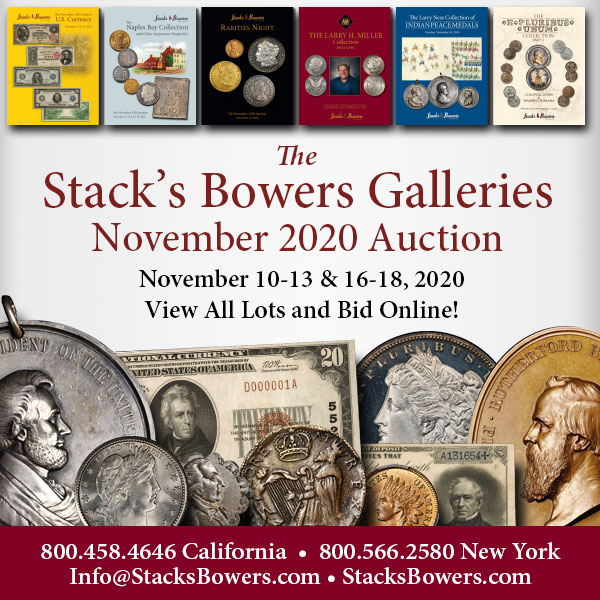
A SURREAL ESCHERESQUE BOOKSTORE IN CHINA
One more for our bibliophiles: here's a Smithsonian magazine story about a wondrous-looking new bookstore in China. See the full article online for more great images. Wow! -Editor
A recently opened bookstore in southwest China looks like it came straight out of one of Dutch artist M.C. Escher's fever dreams.
Located west of Chengdu in the Sichuan province, Dujiangyan Zhongshuge boasts spiraling staircases, curved archways and strategically placed mirrors; these architectural features work in tandem to create the illusion of an impossible space similar to the one depicted in Escher's gravity-defying Relativity (1953).

Architect Li Xiang, founder of Shanghai-based firm X+Living, designed the roughly 10,500-square-foot bookshop, which draws inspiration from the Unesco World Heritage–listed Dujiangyan irrigation system. Certain architectural elements resemble water, nodding to the many rivers that flow through the city.
"We moved the local landscape into the indoor space," Li tells Architectural Digest's Elizabeth Stamp. "The project is located in Dujiangyan, which is a city with a long history of water conservancy development, so in the main area, you [can] see the construction of the dam integrated into the bookshelves."
According to a statement, the Dujiangyan store—much like Zhongshuge's other locations—uses a mirrored ceiling to simulate a sense of limitless openness. Book-laden, ceiling-high shelves echo the curves of nature, while glossy, black-tile flooring makes reading tables scattered across the space resemble boats moored on a lake.
Visitors walking through the labyrinth-like store will find areas designed to fulfill different purposes. The children's reading room, for instance, is replete with panda posters, bamboo bookshelves and colorful cushions.


Spiral staircases and mirrored ceiling
As Li notes on Instagram, the tomes placed on the bookshelves' highest levels are purely decorative. But all books within readers' reach—some 80,000 volumes spanning more than 20,000 categories—are "readable," she adds.
To read the complete article, see:
SEE A STUNNINGLY SURREAL BOOKSTORE IN CHINA
(https://www.smithsonianmag.com/smart-news/gorgeous-bookstore-china-creates-other-worldly-space-180976143/)
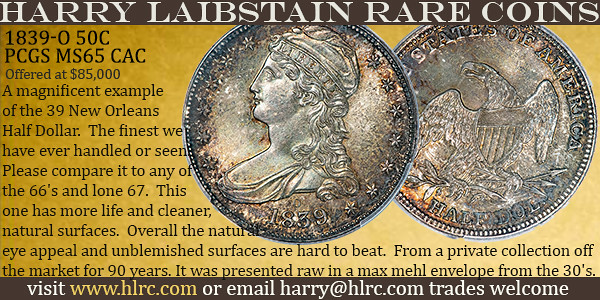
FEATURED WEB SITE: THE TYRANT COLLECTION
This week's Featured Web Site is The Tyrant Collection, recommended by Ed Moore in Texas. Be sure to drill down to see the photos. NOTE: for bibliophiles, five books are available at just $10 each, one for each of the collection exhibits.
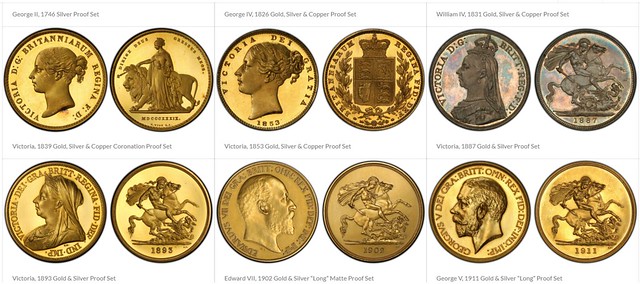
http://thetyrantcollection.com/


